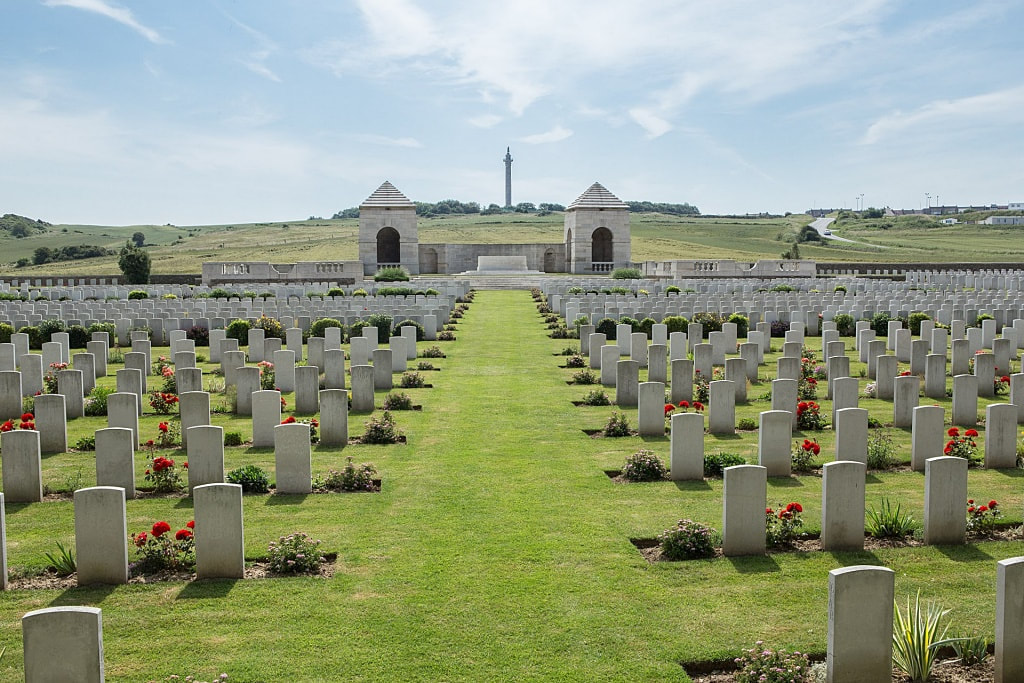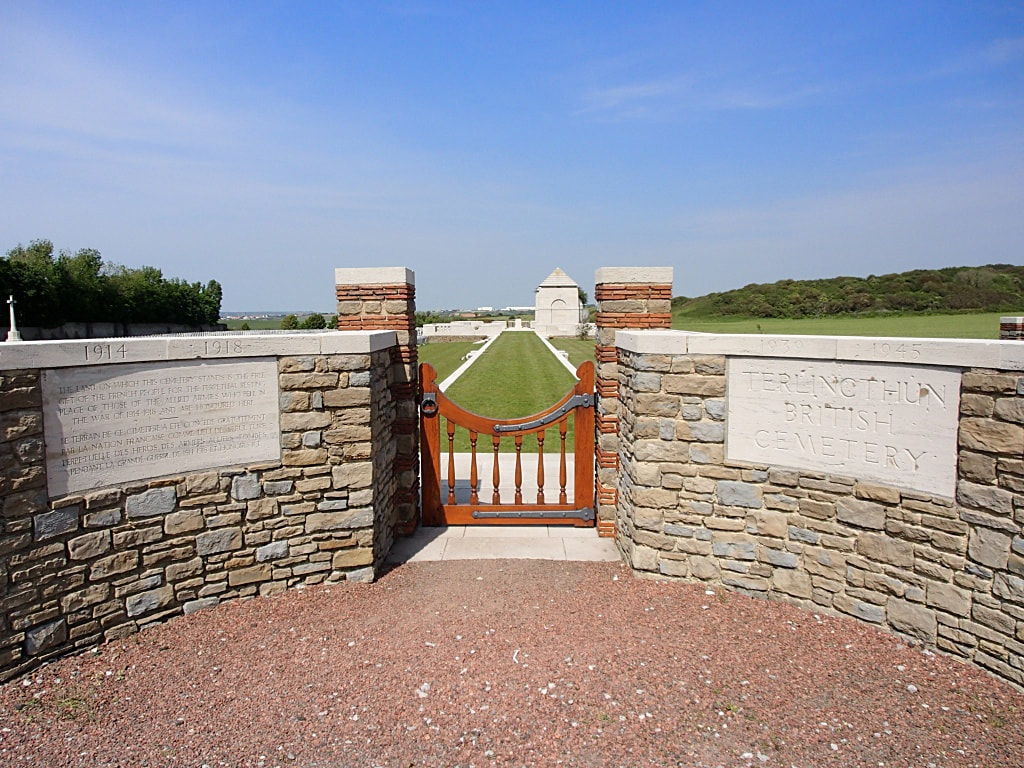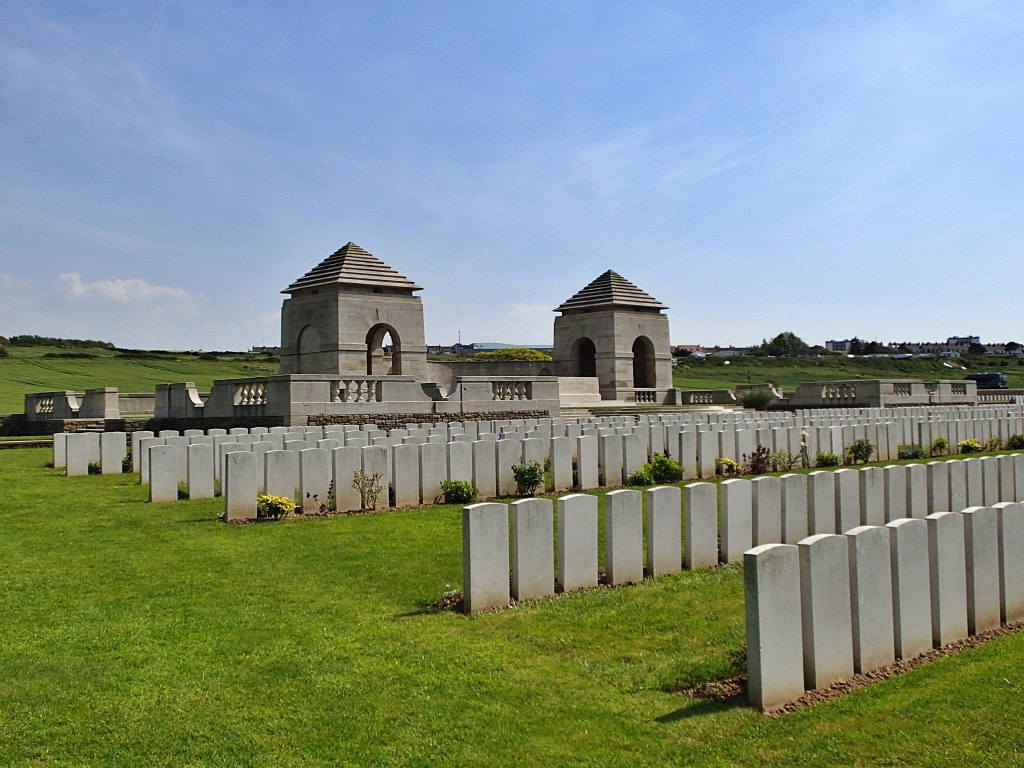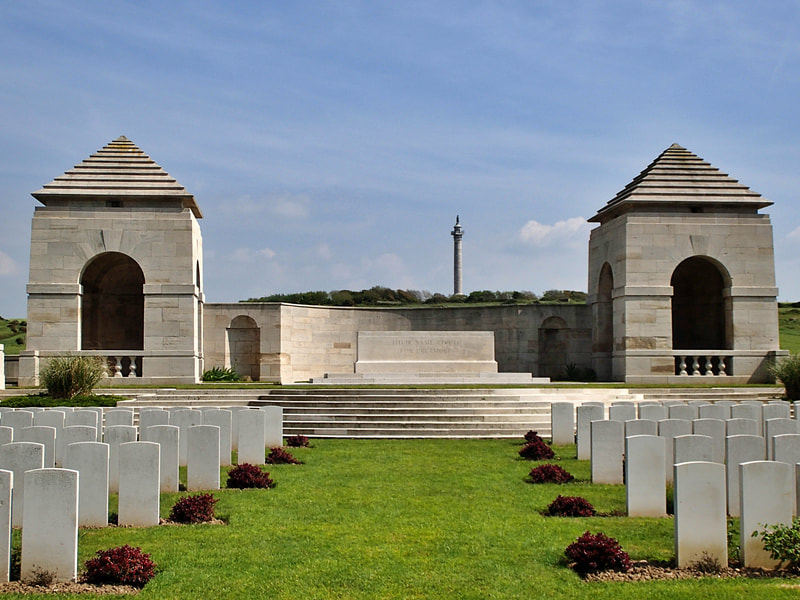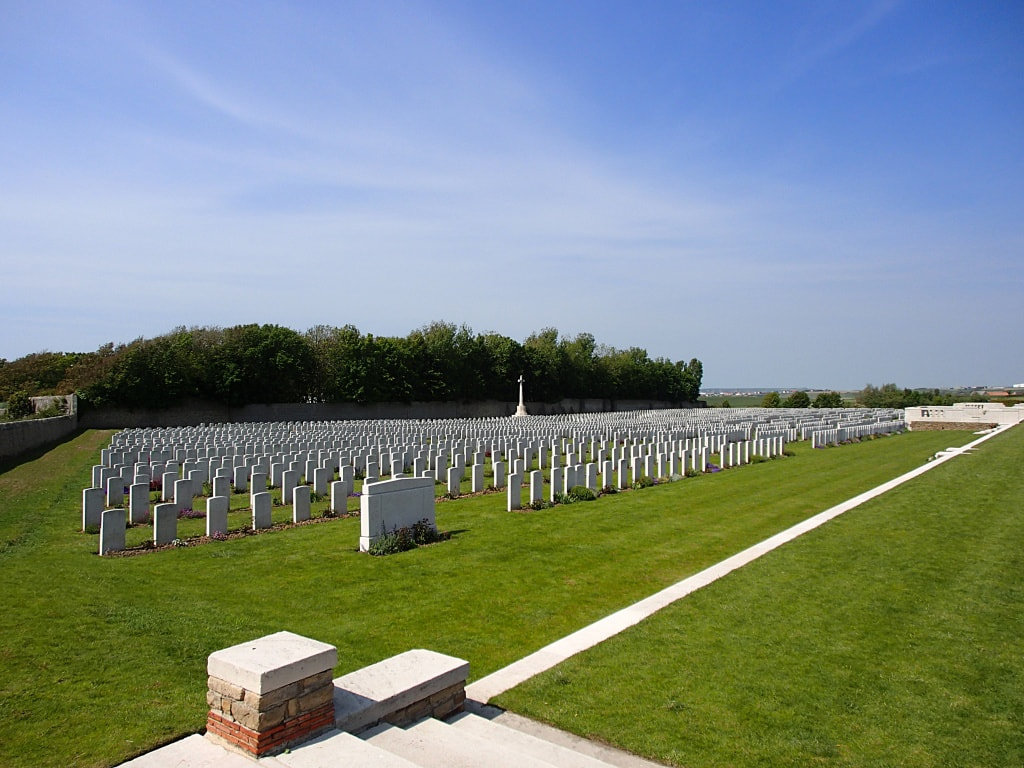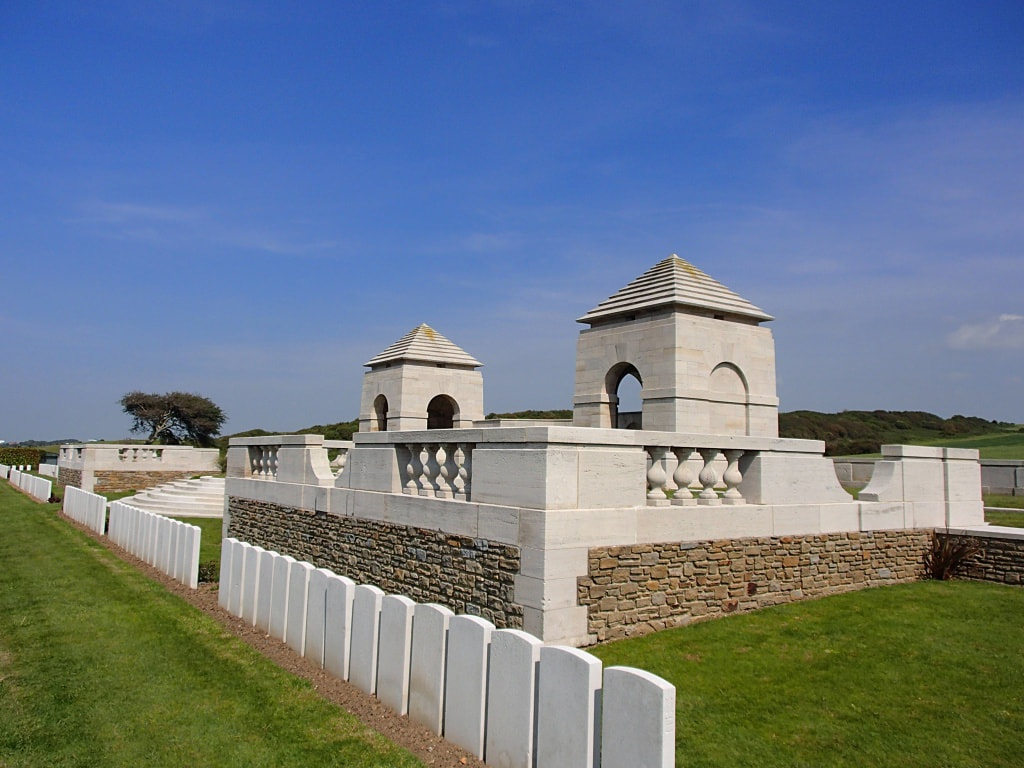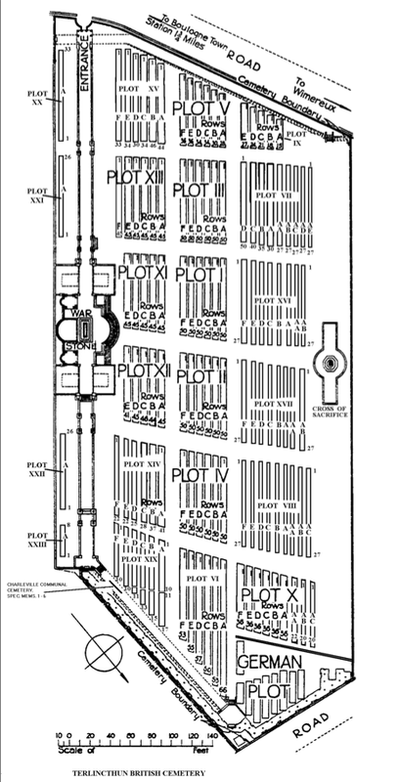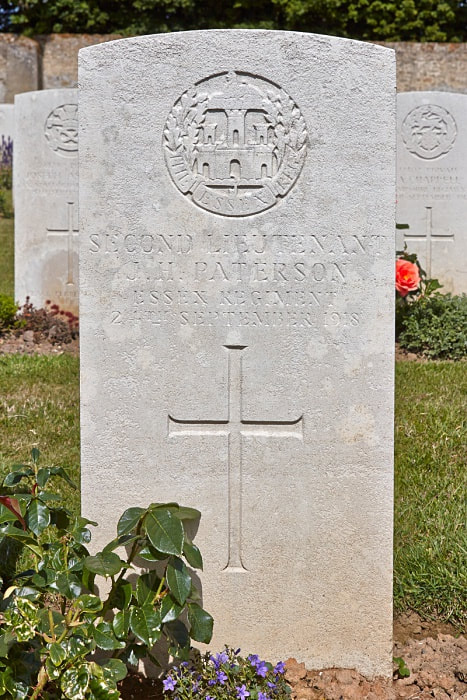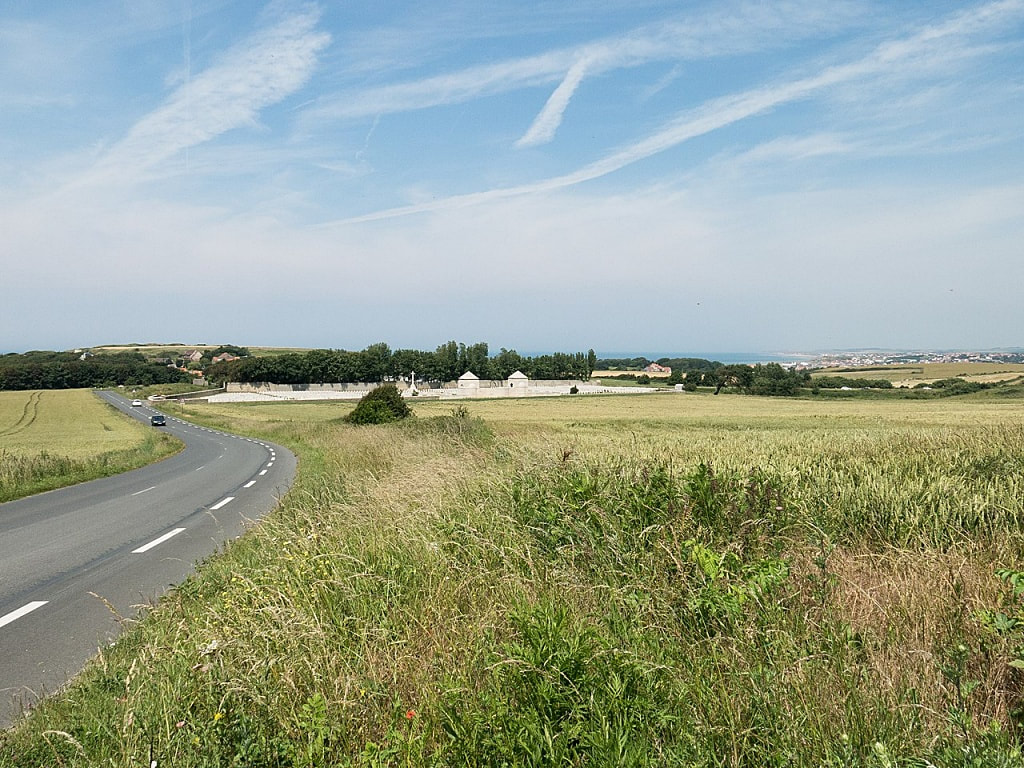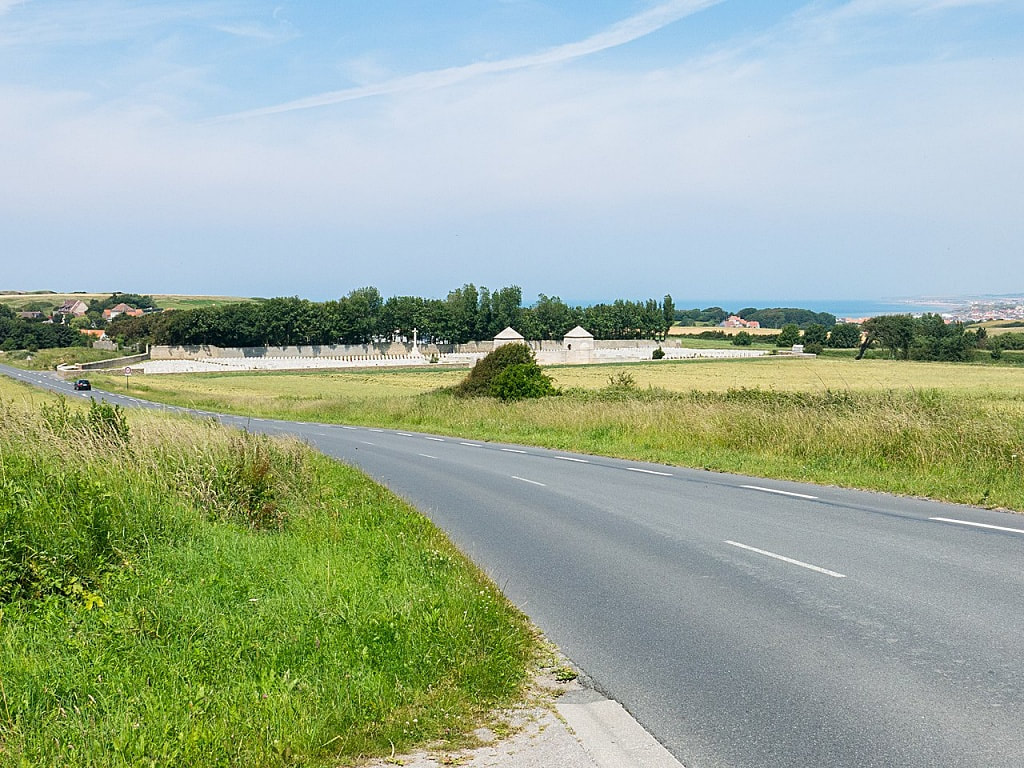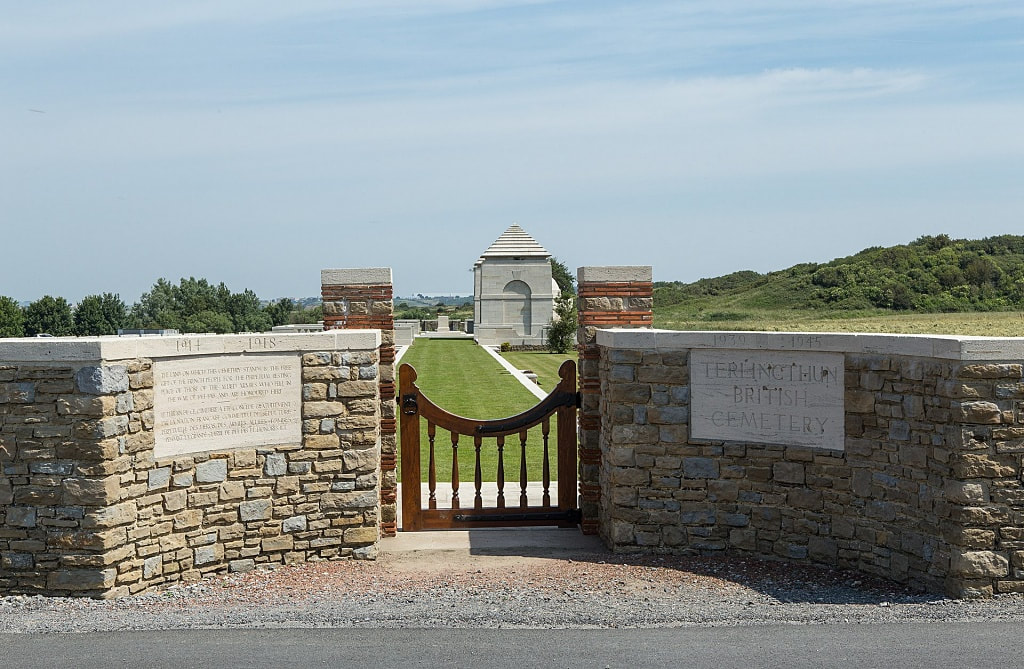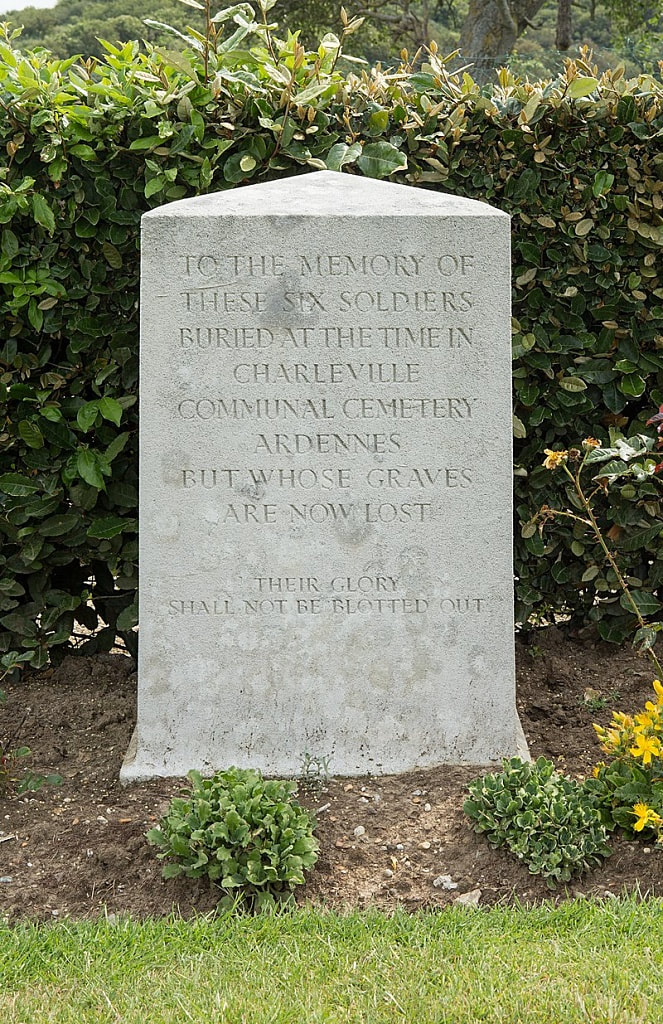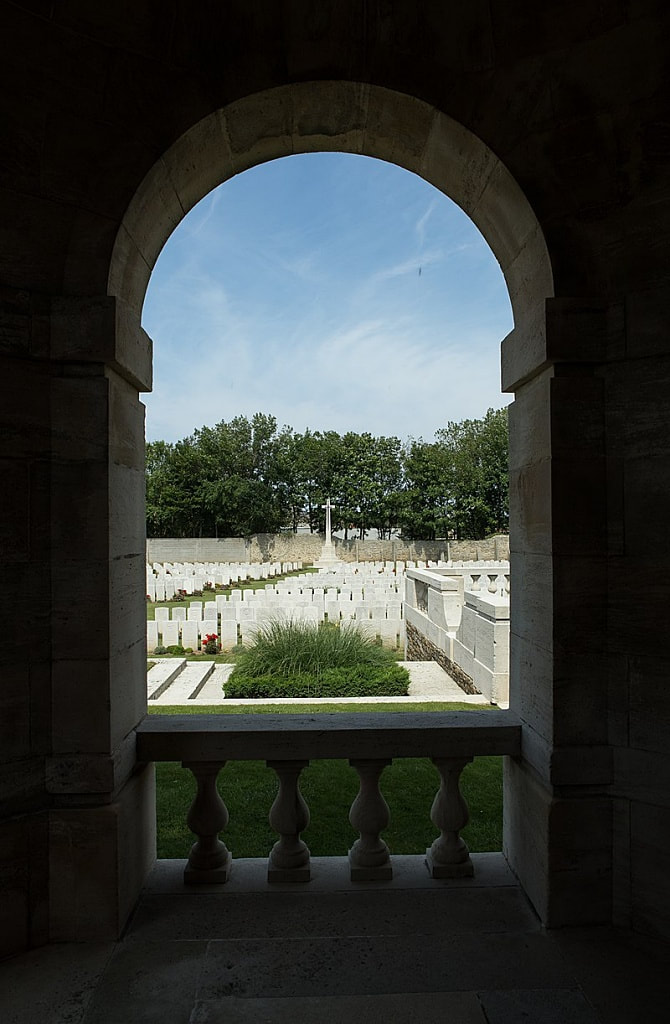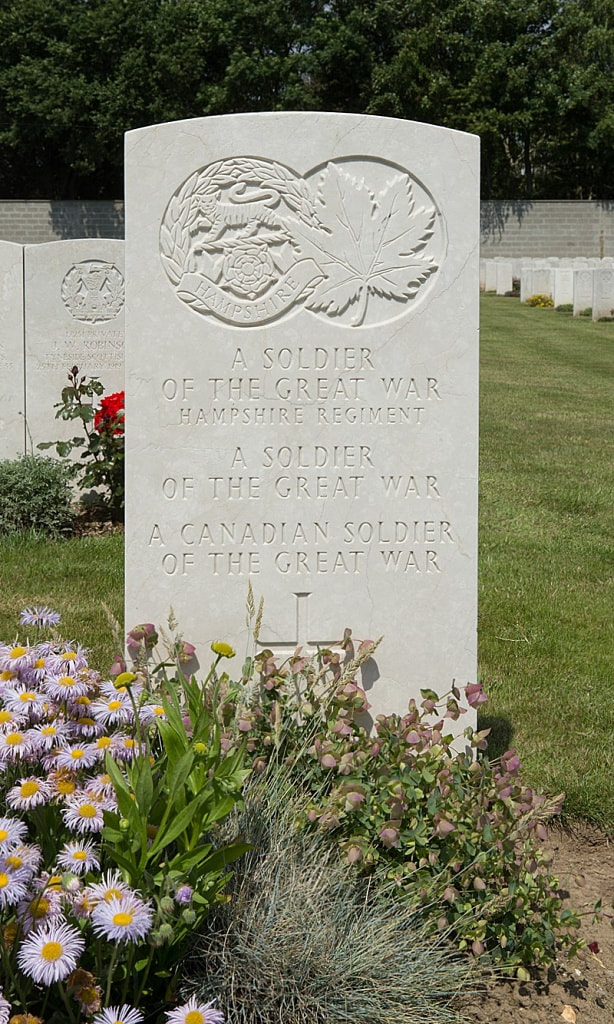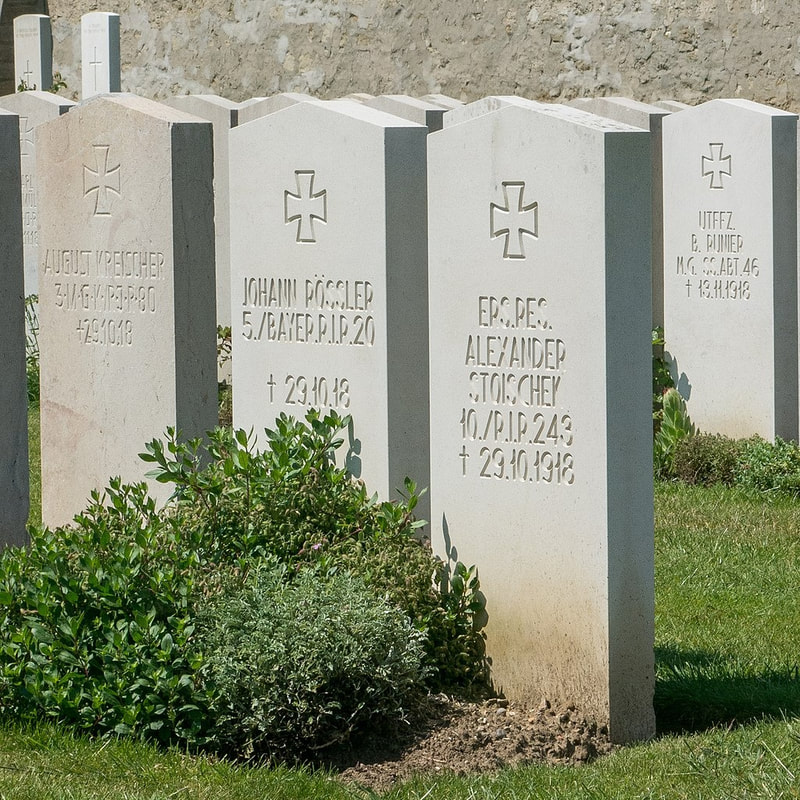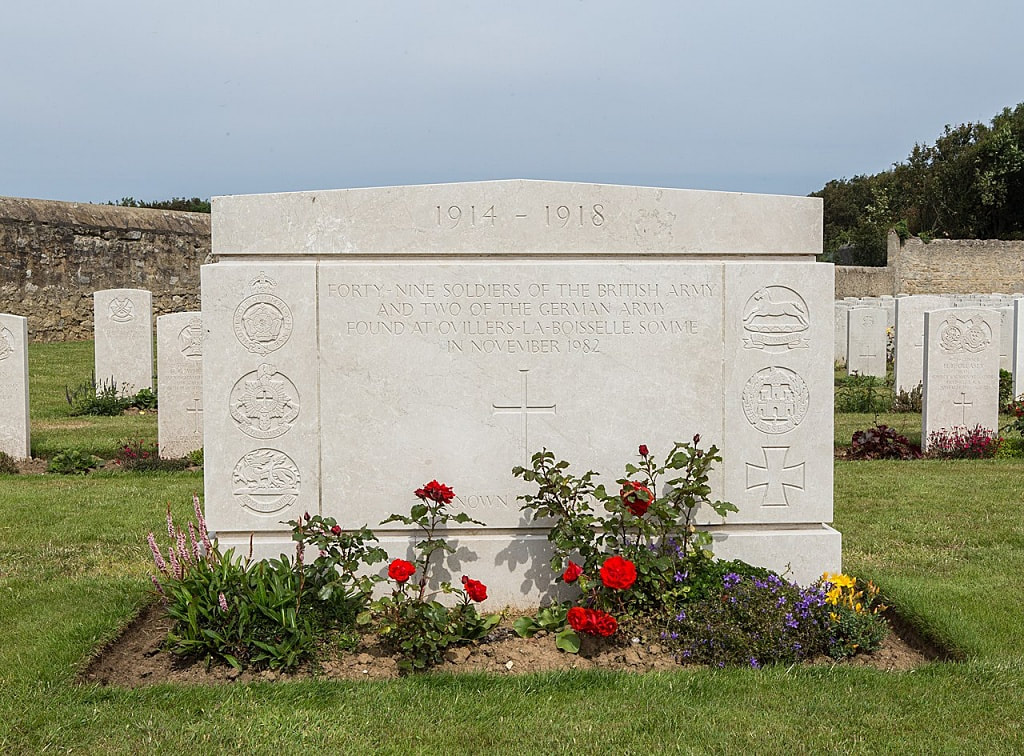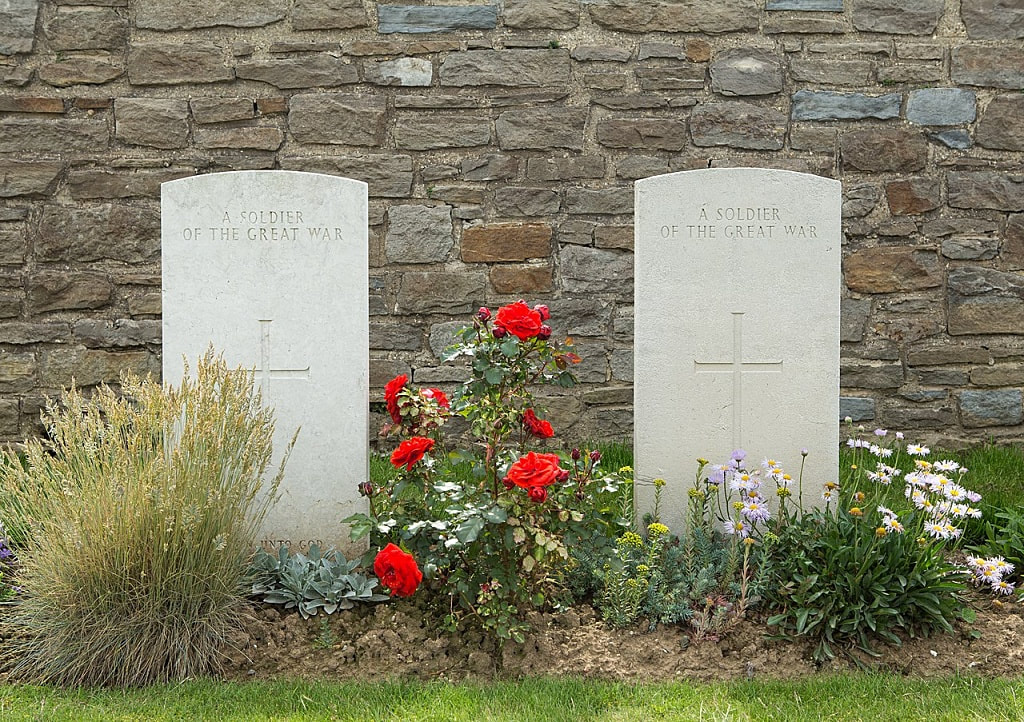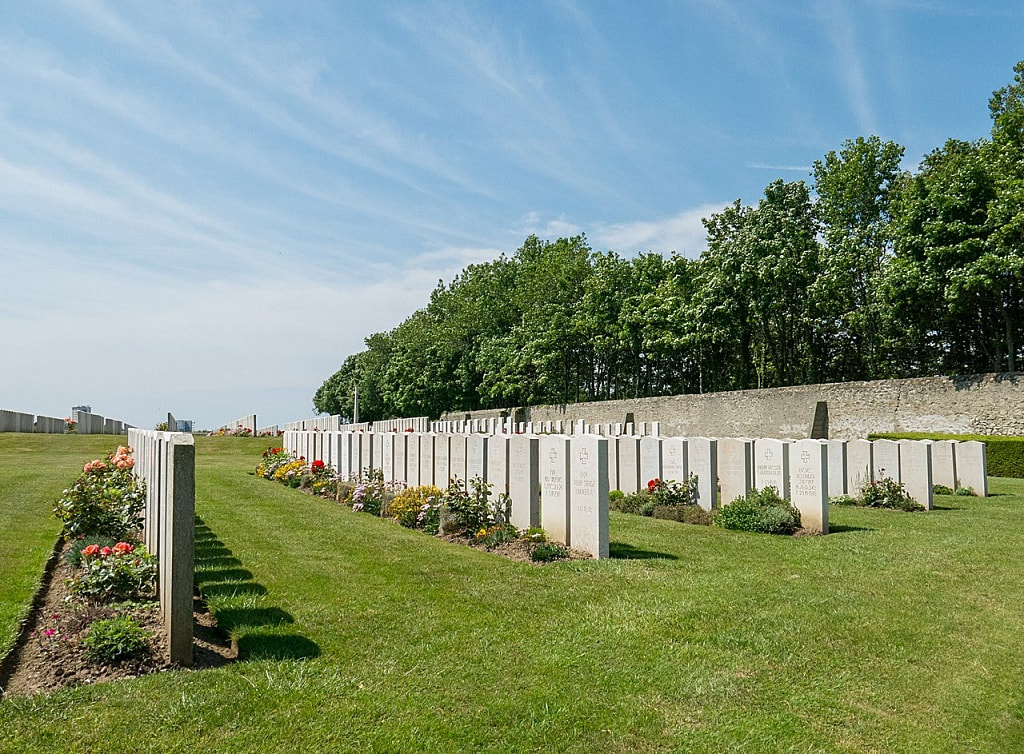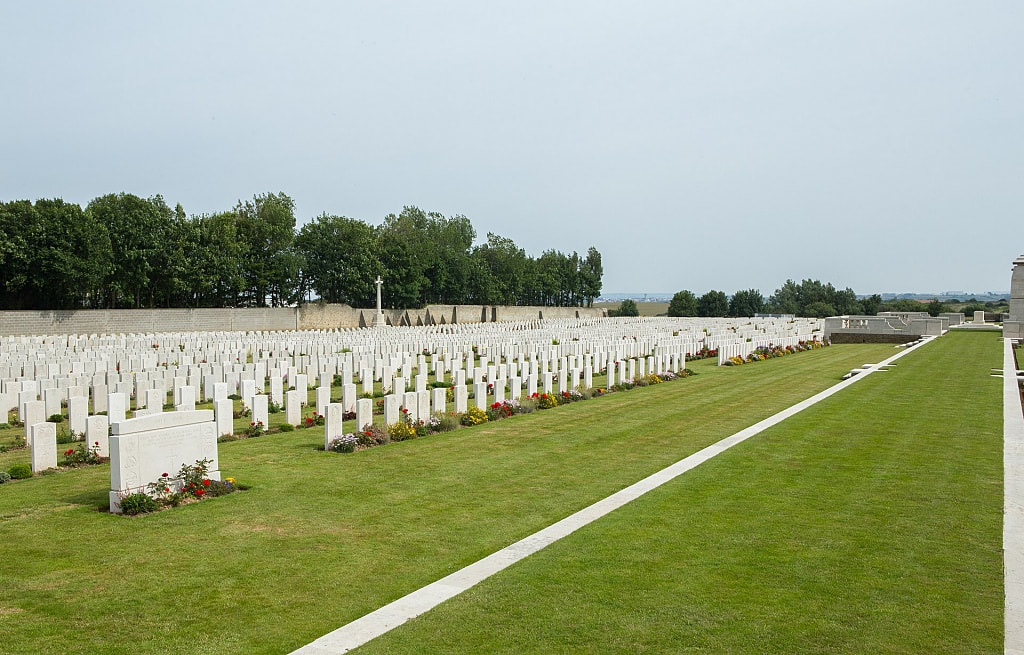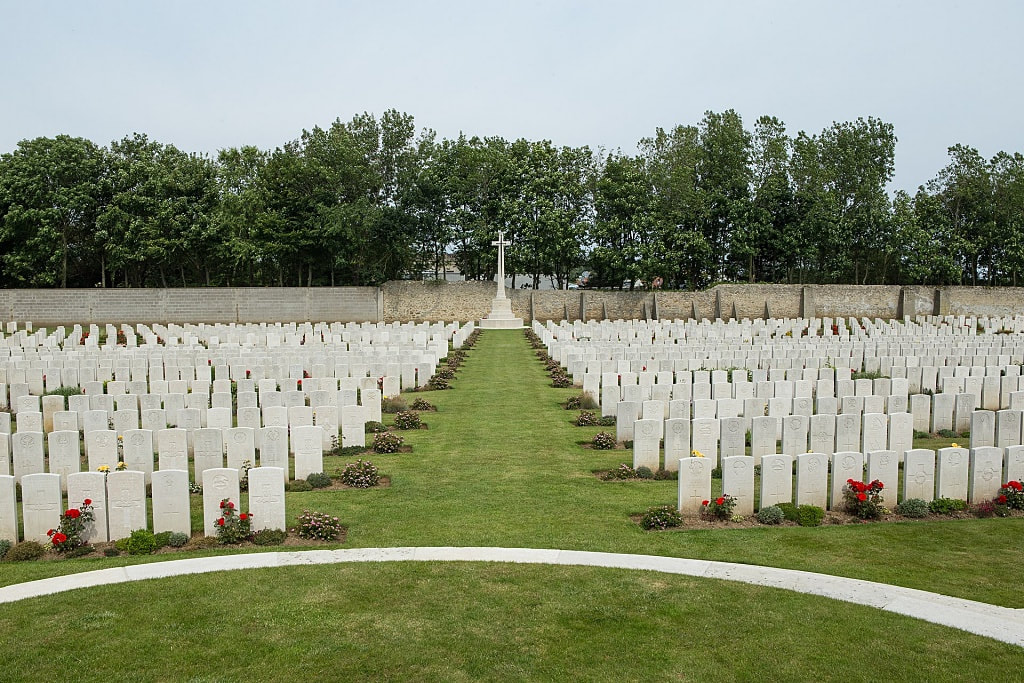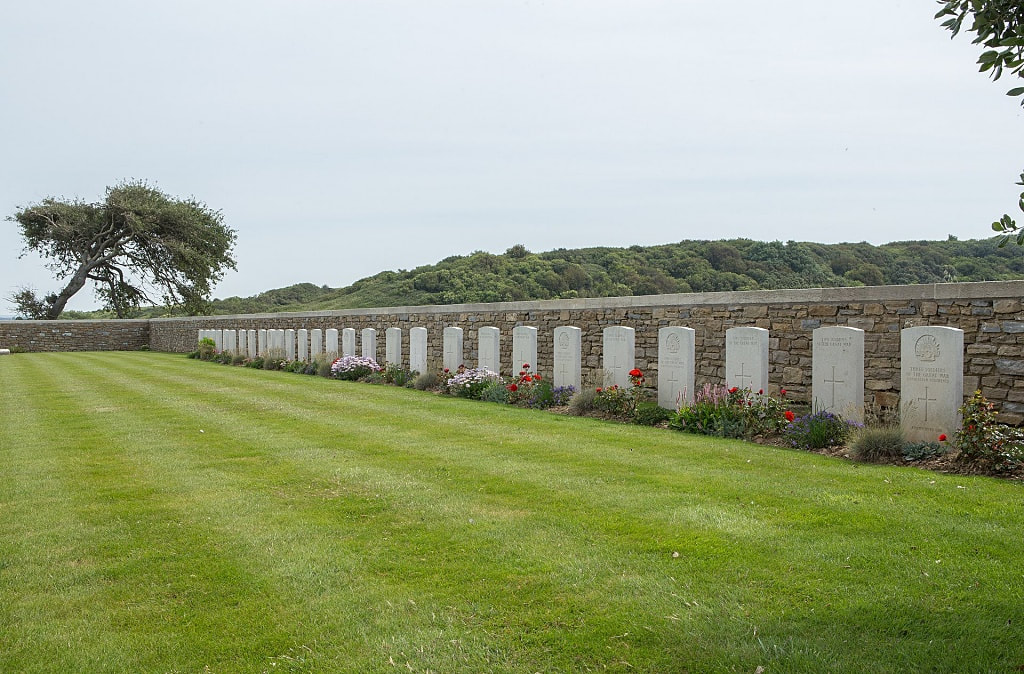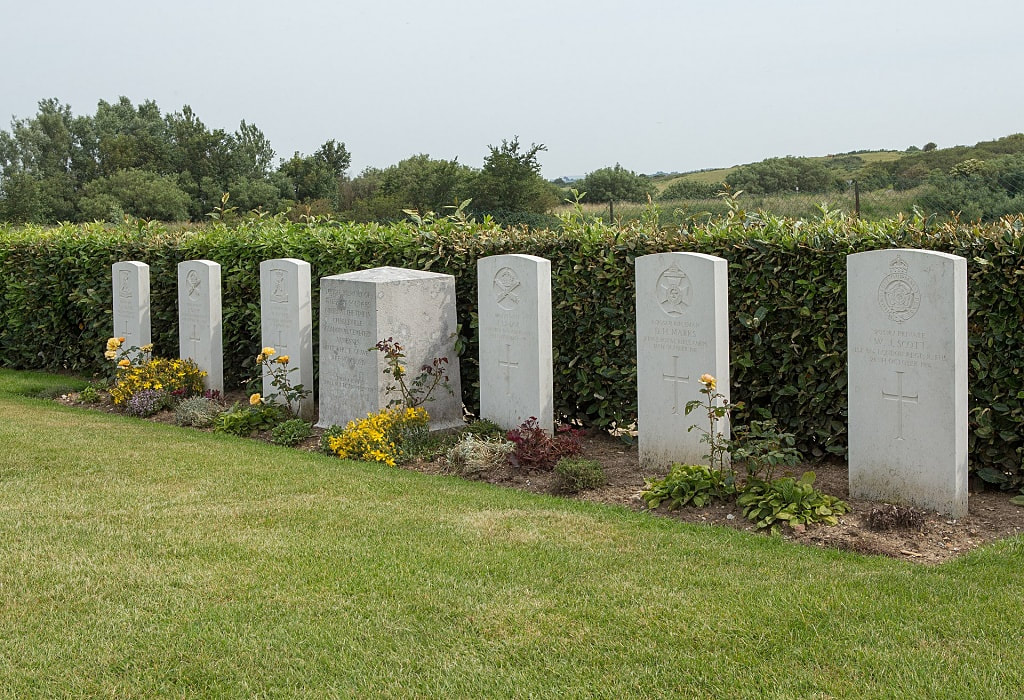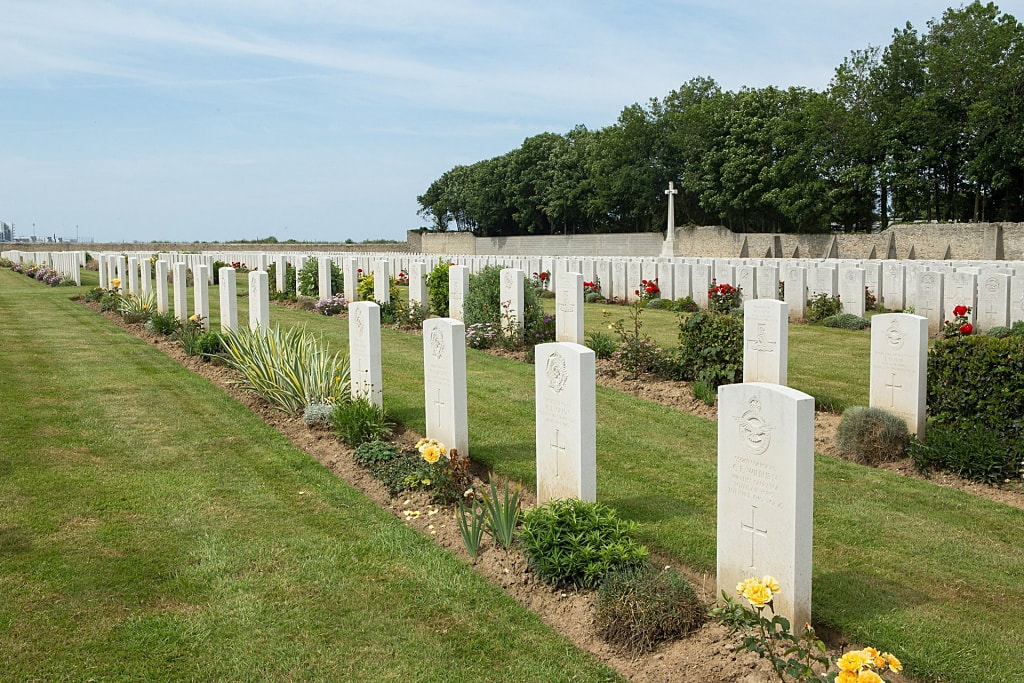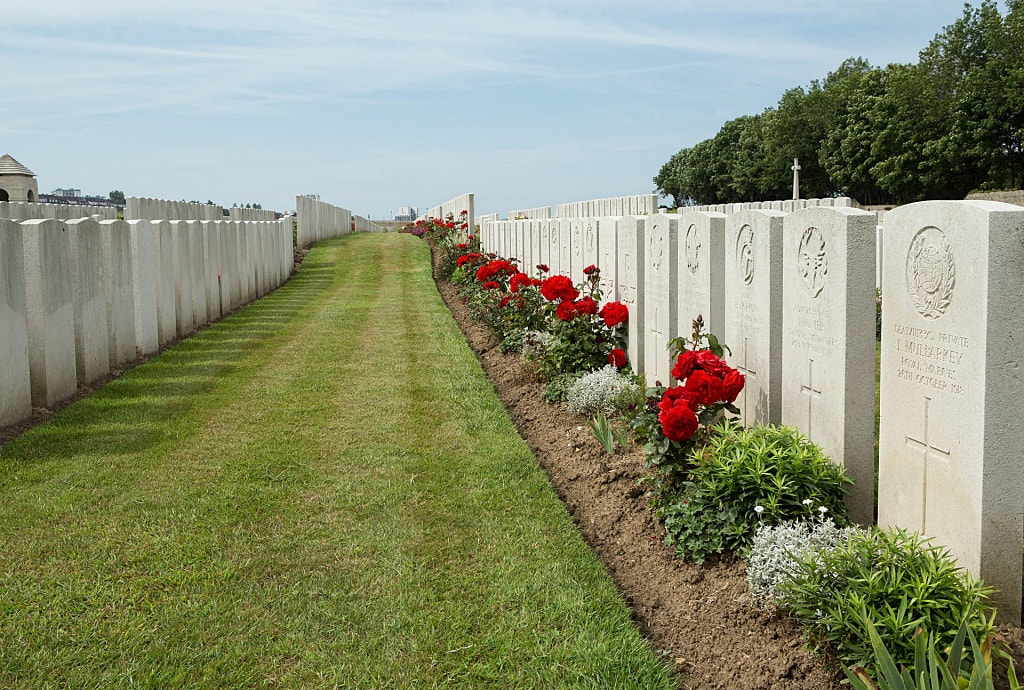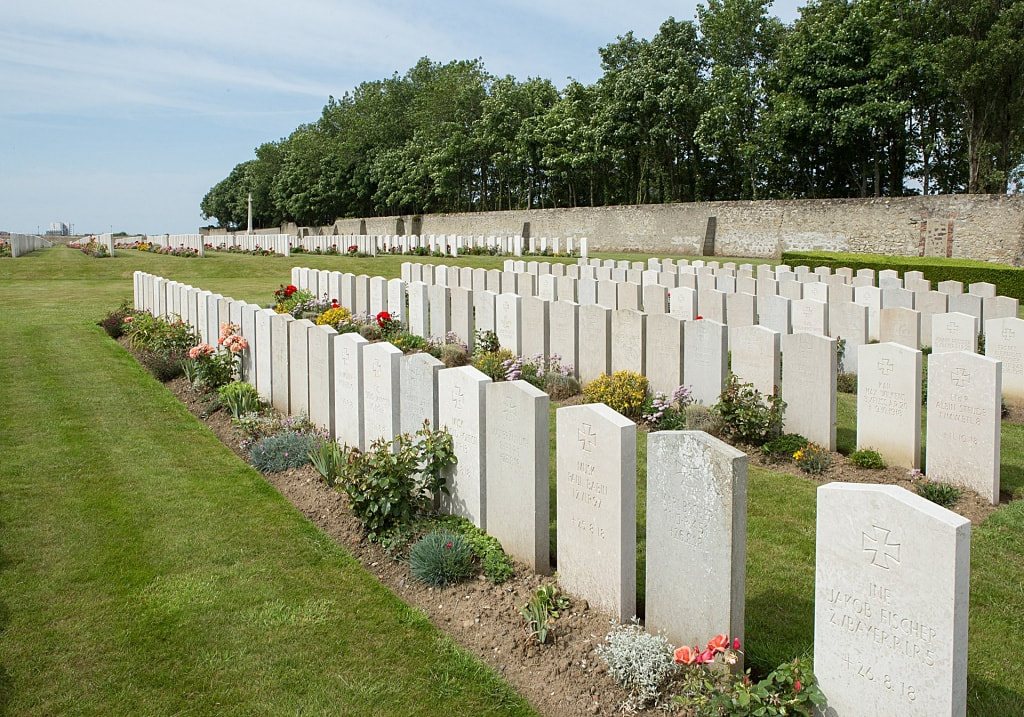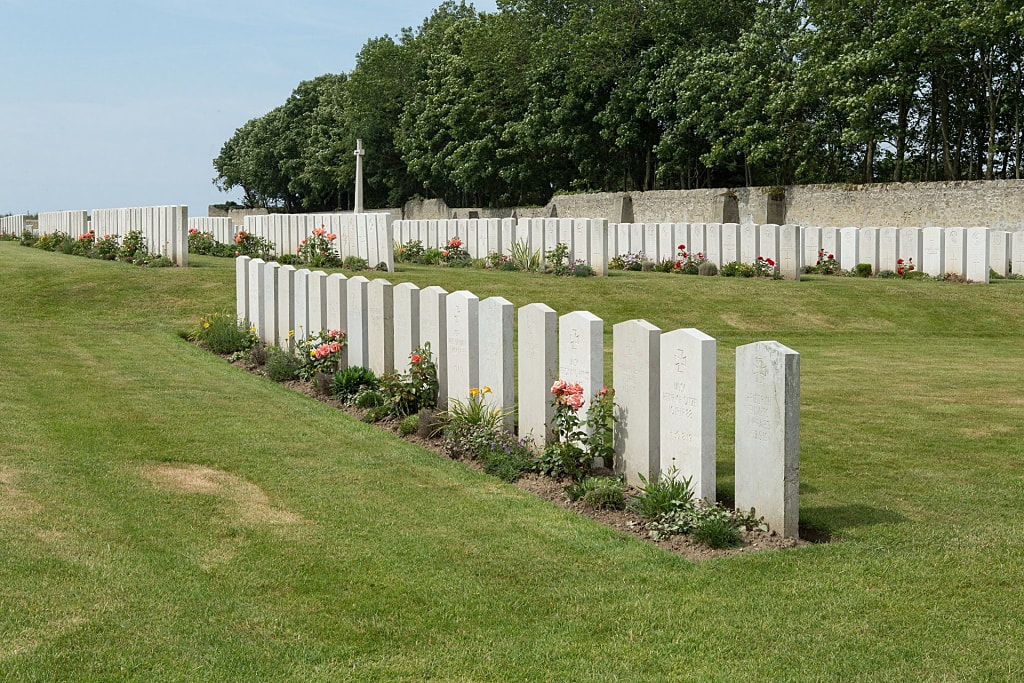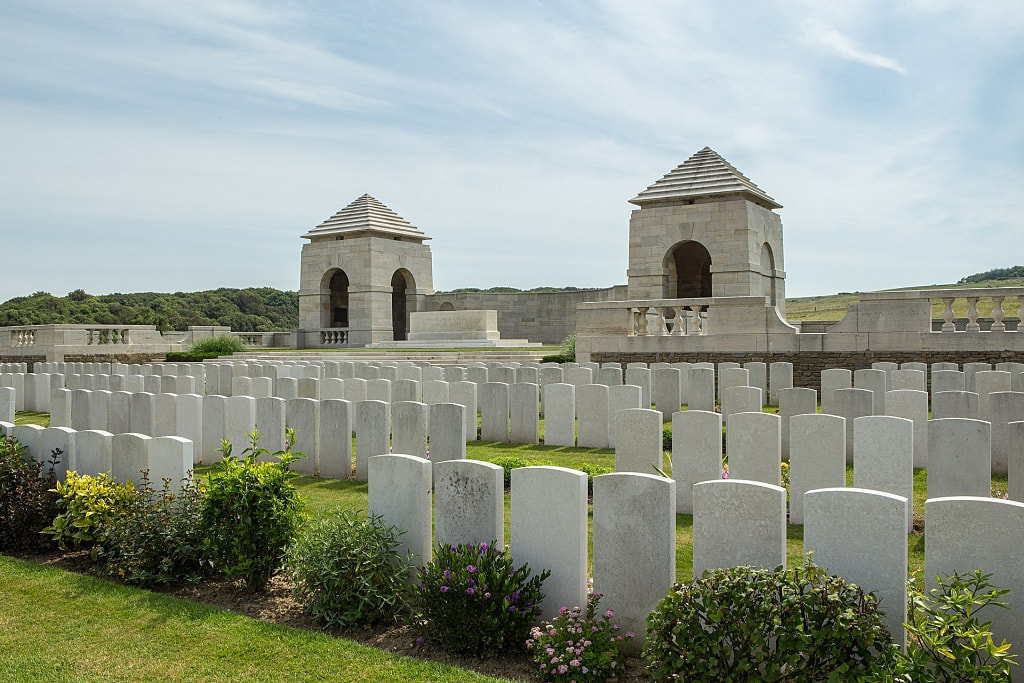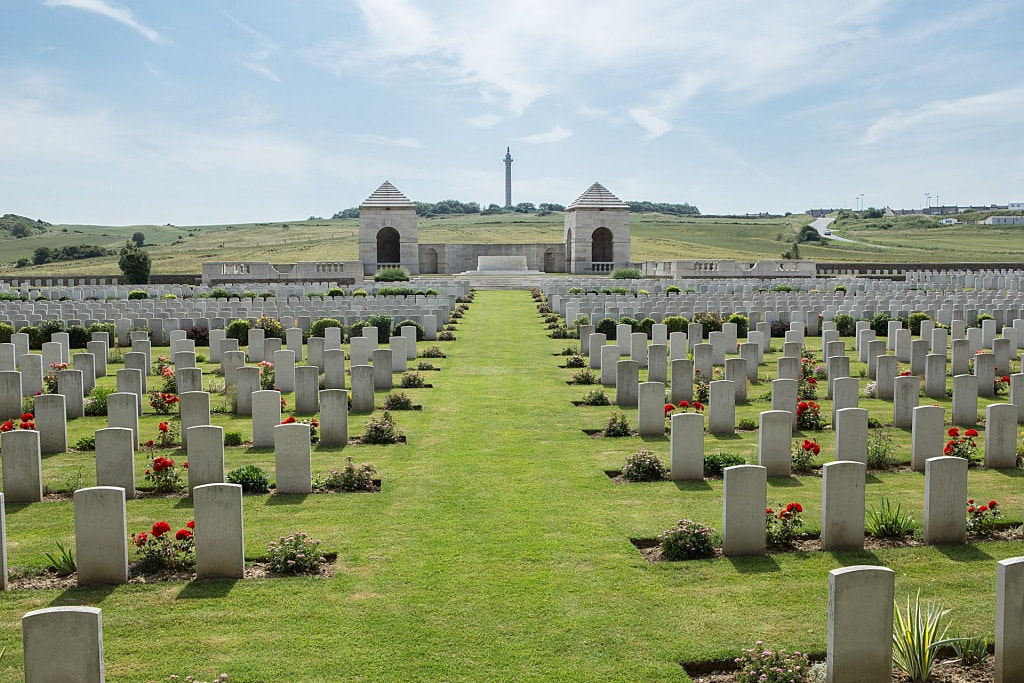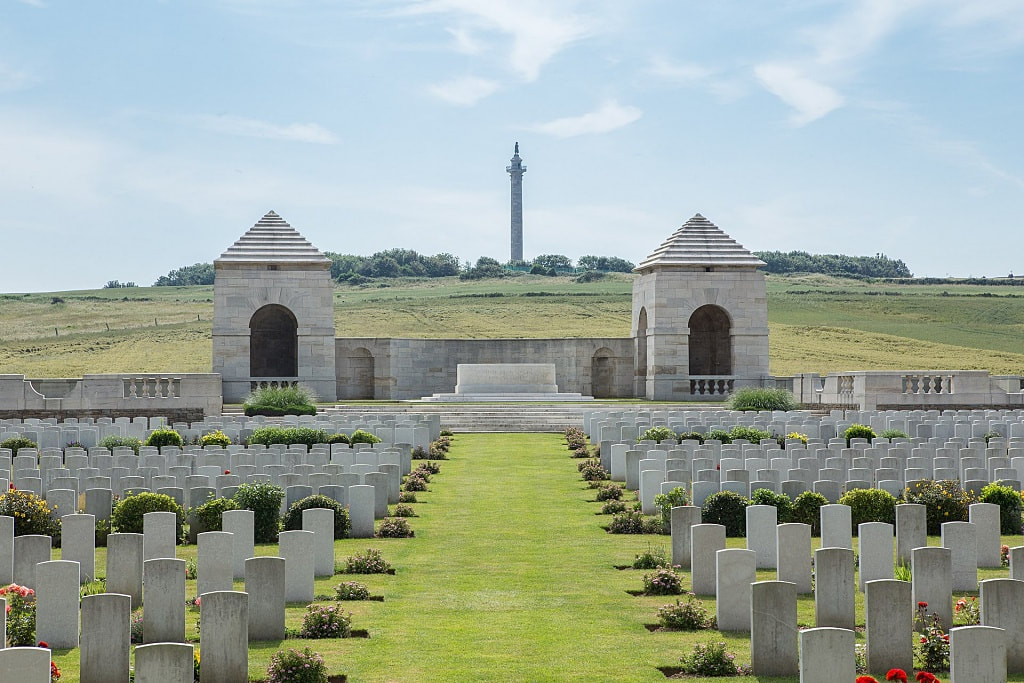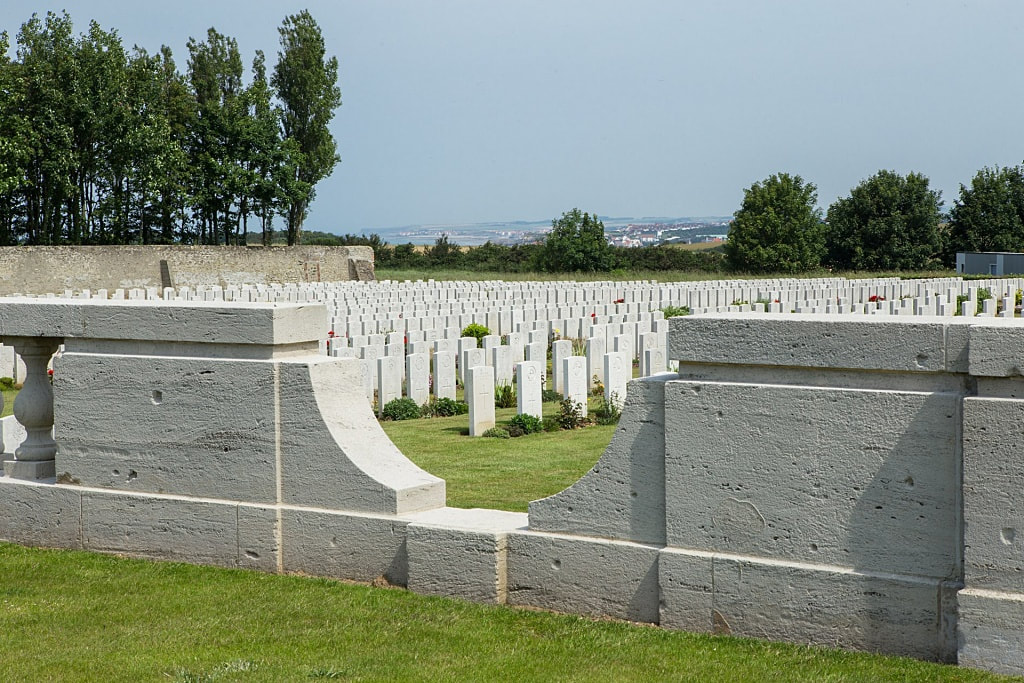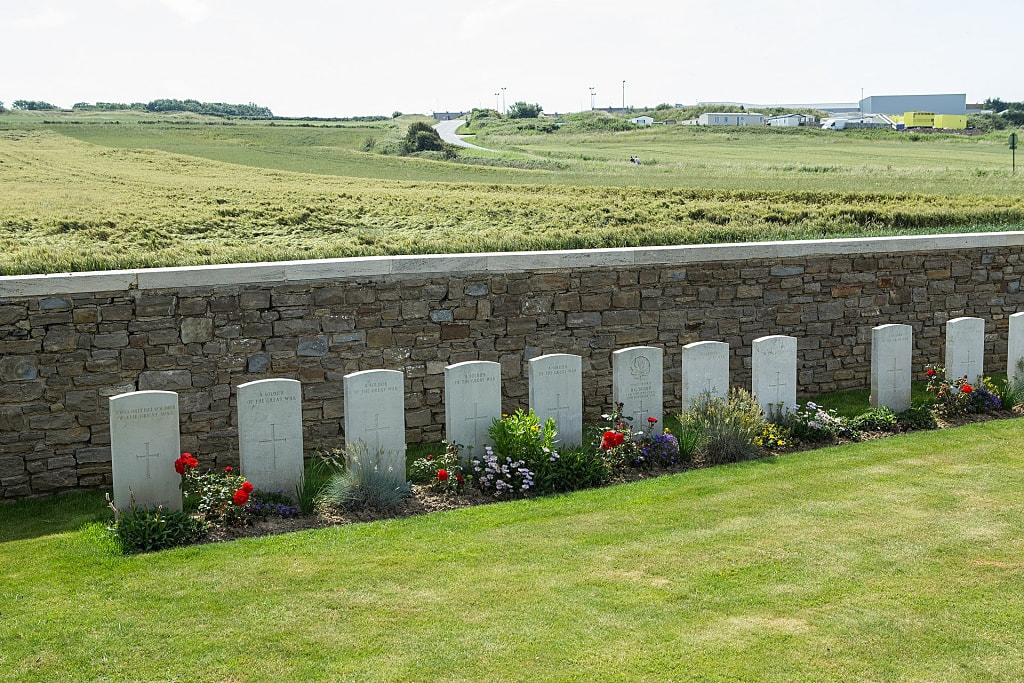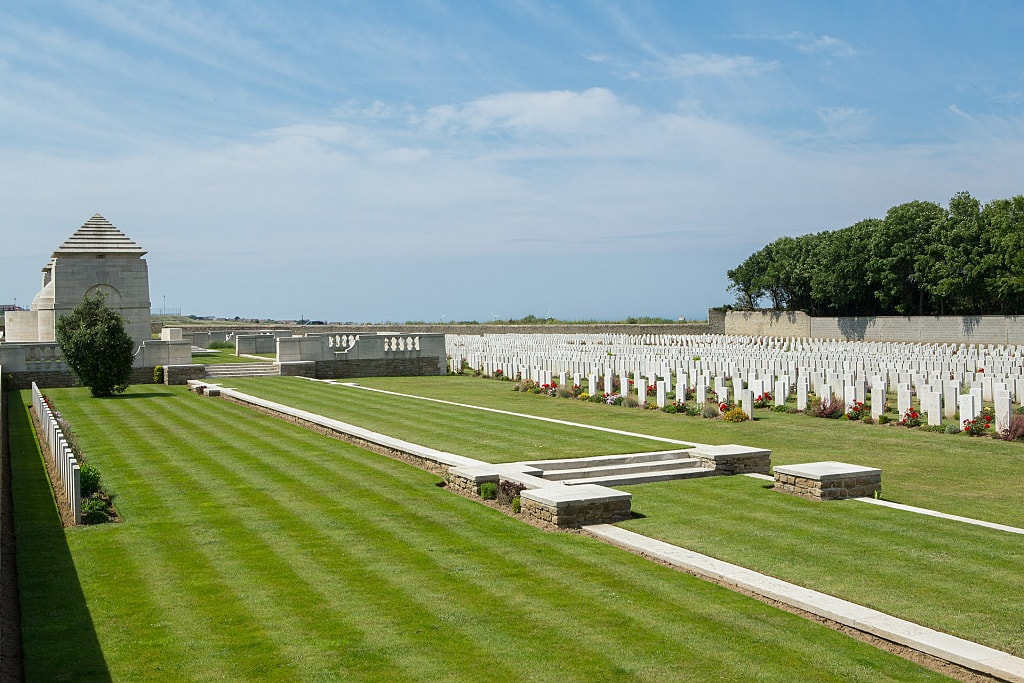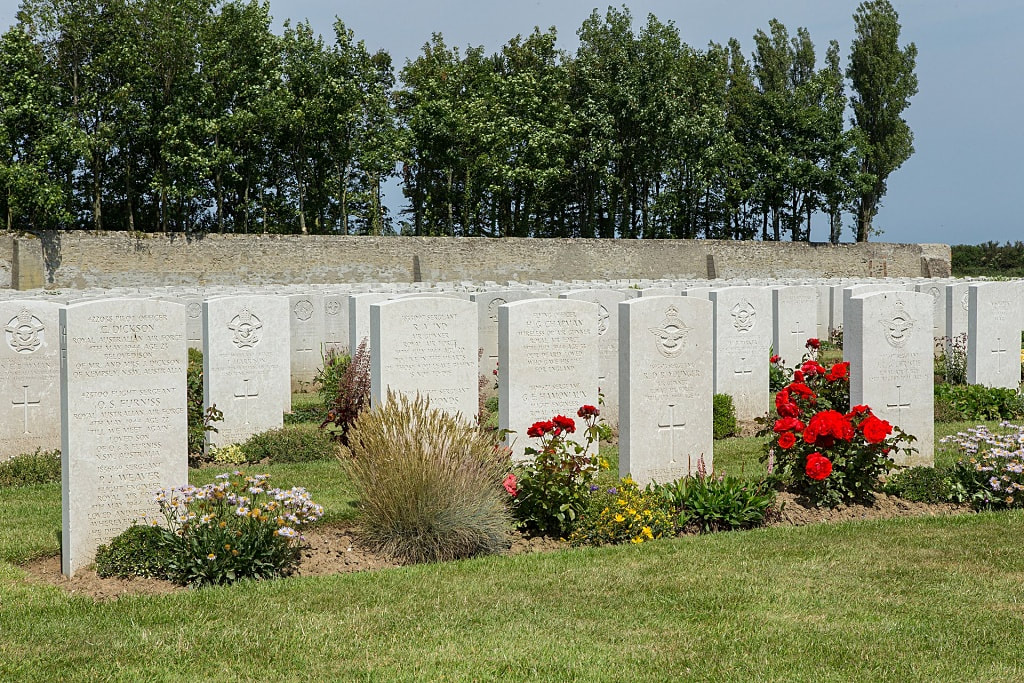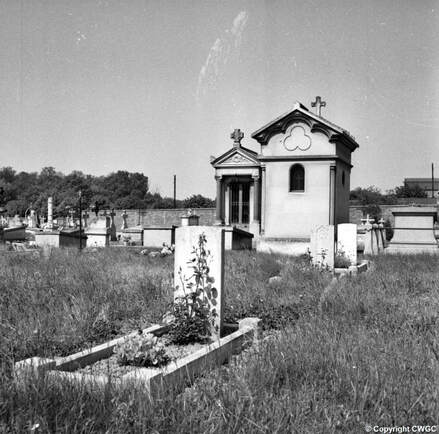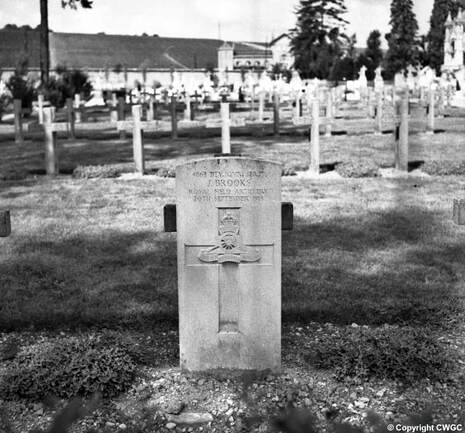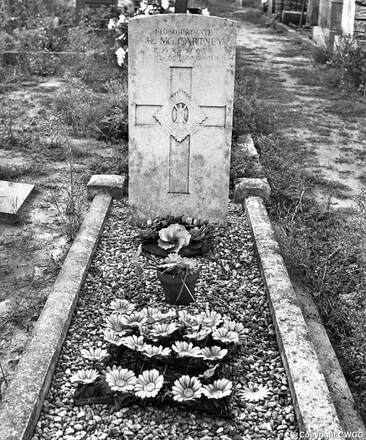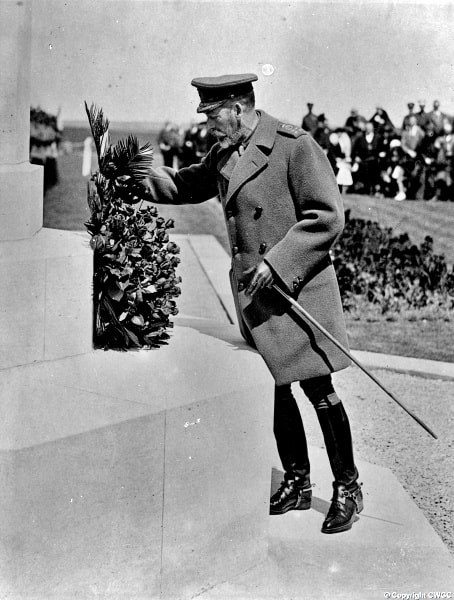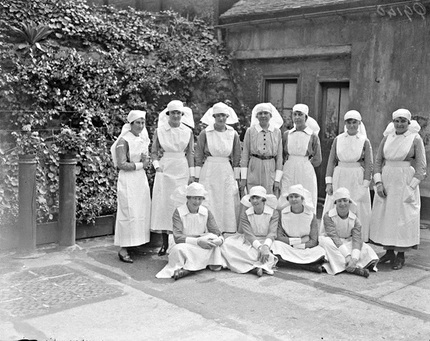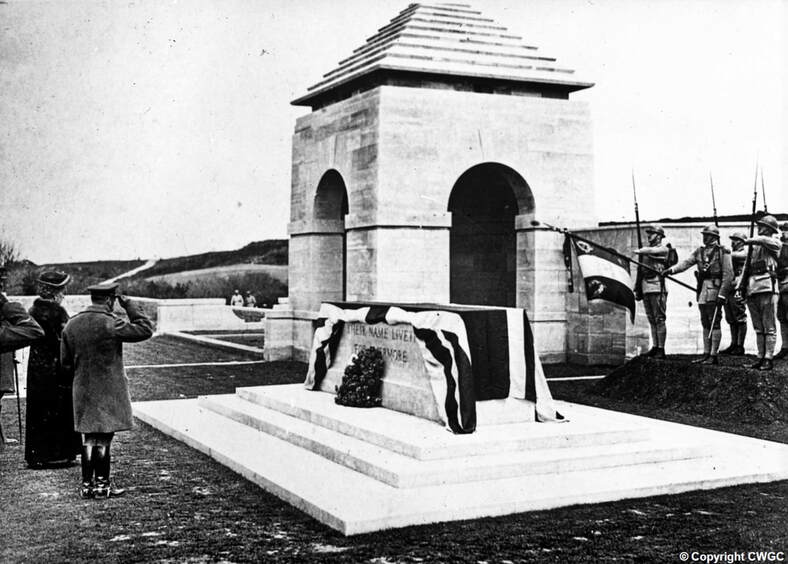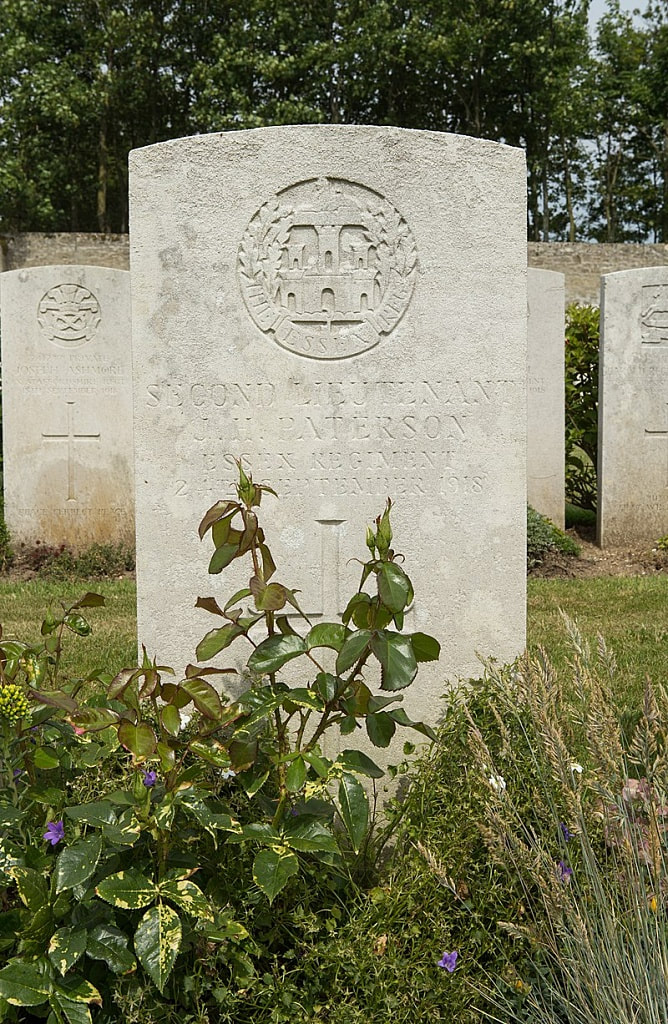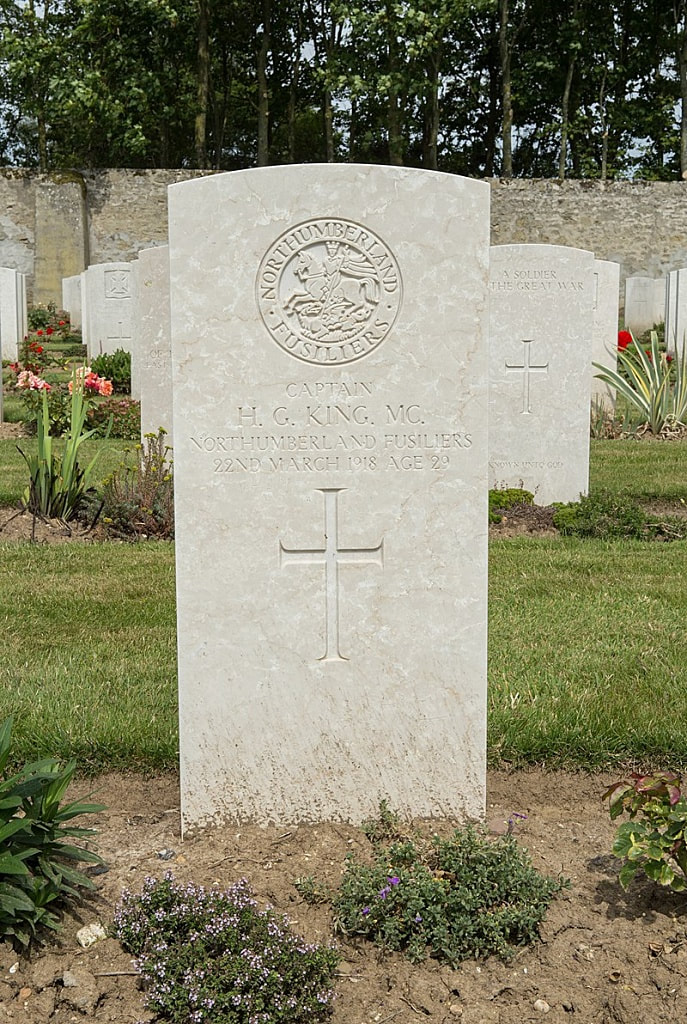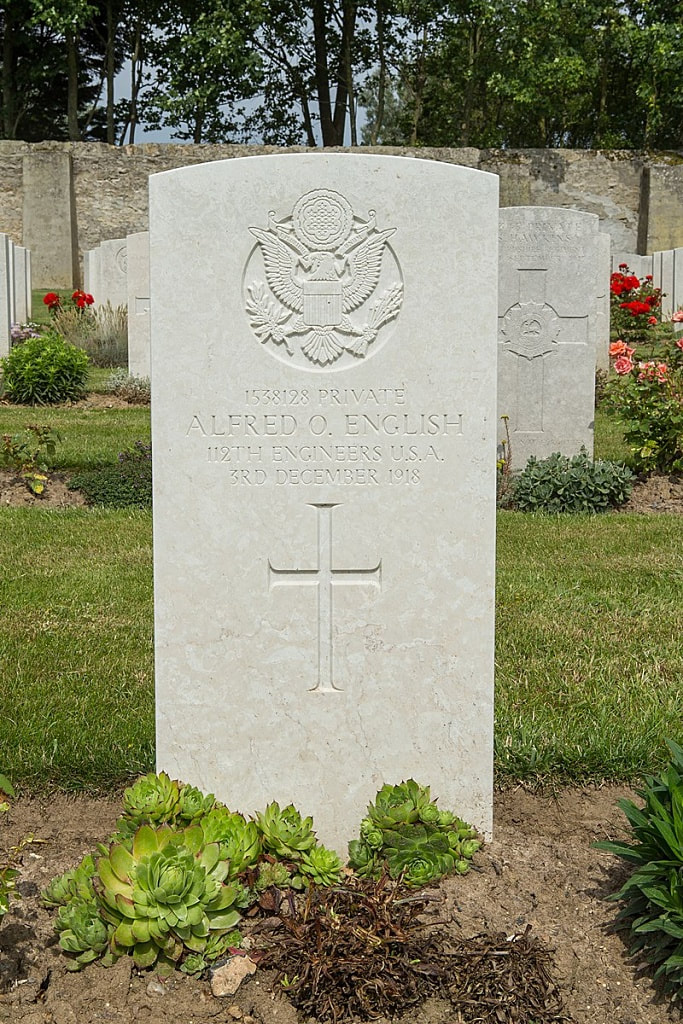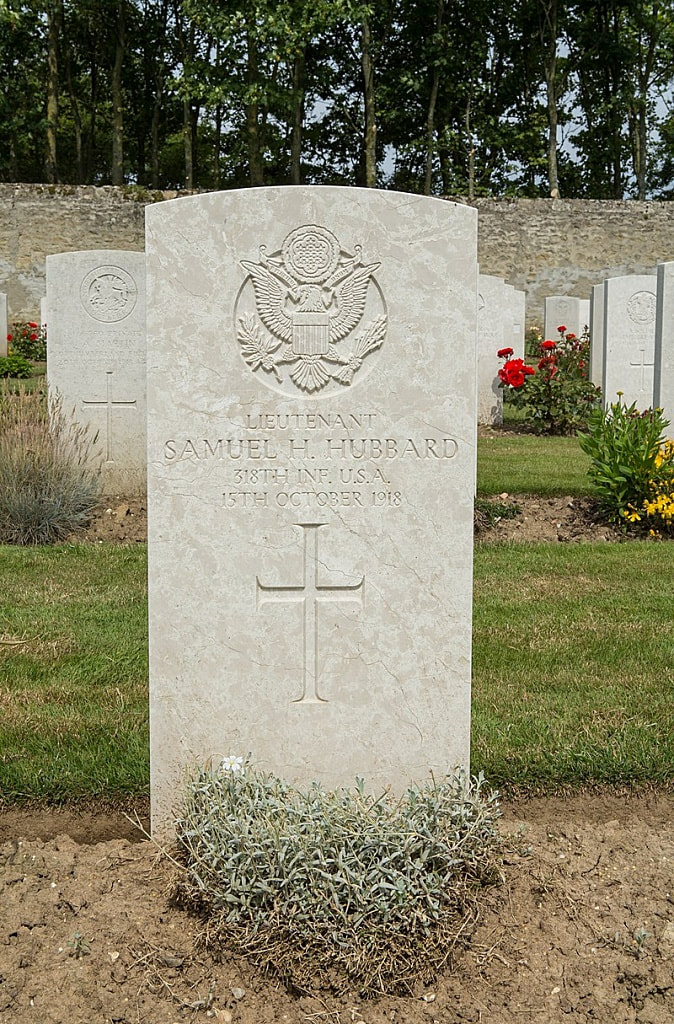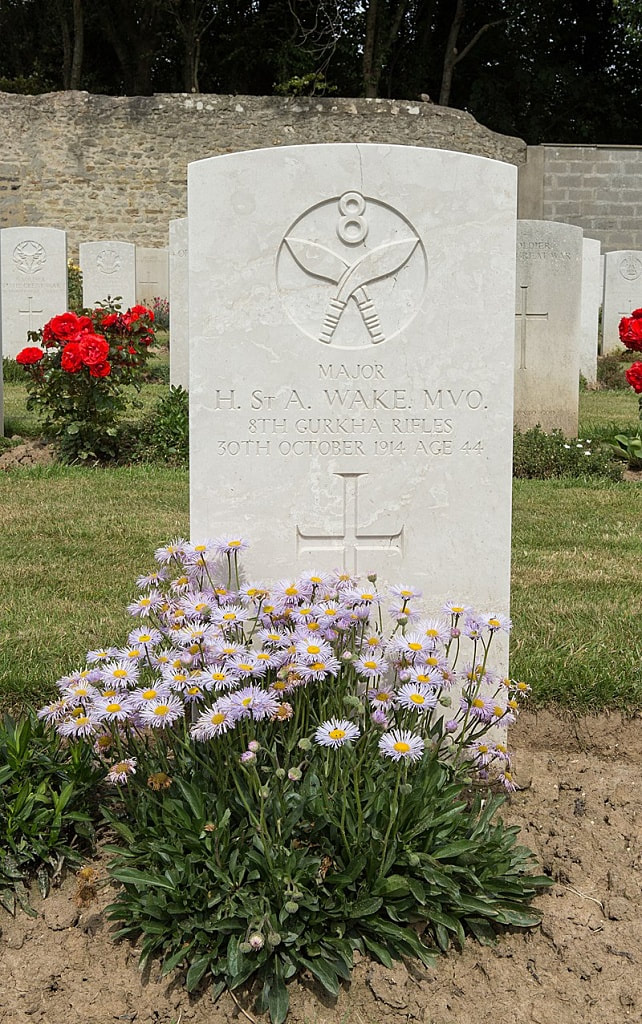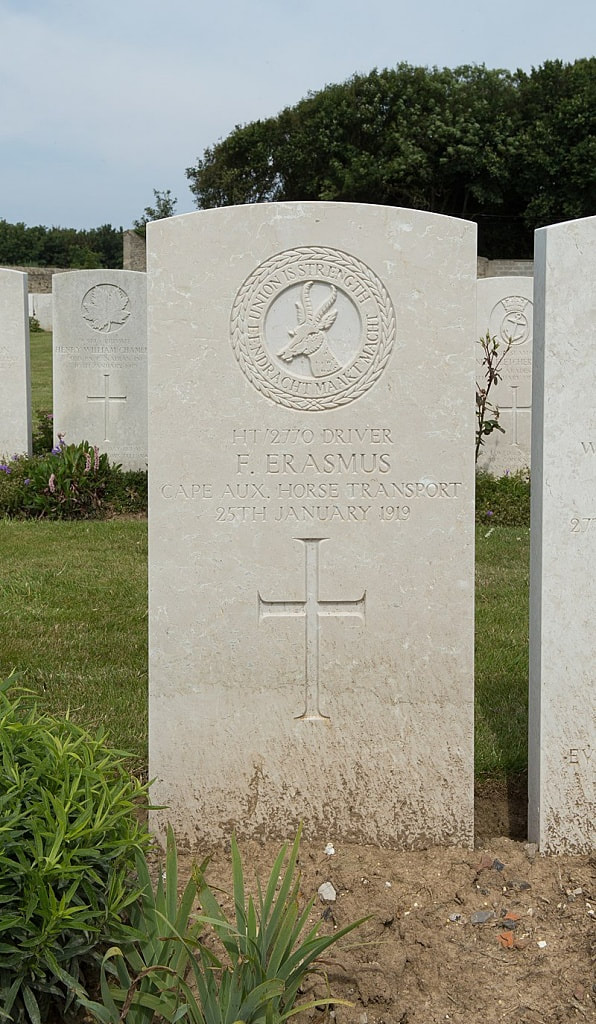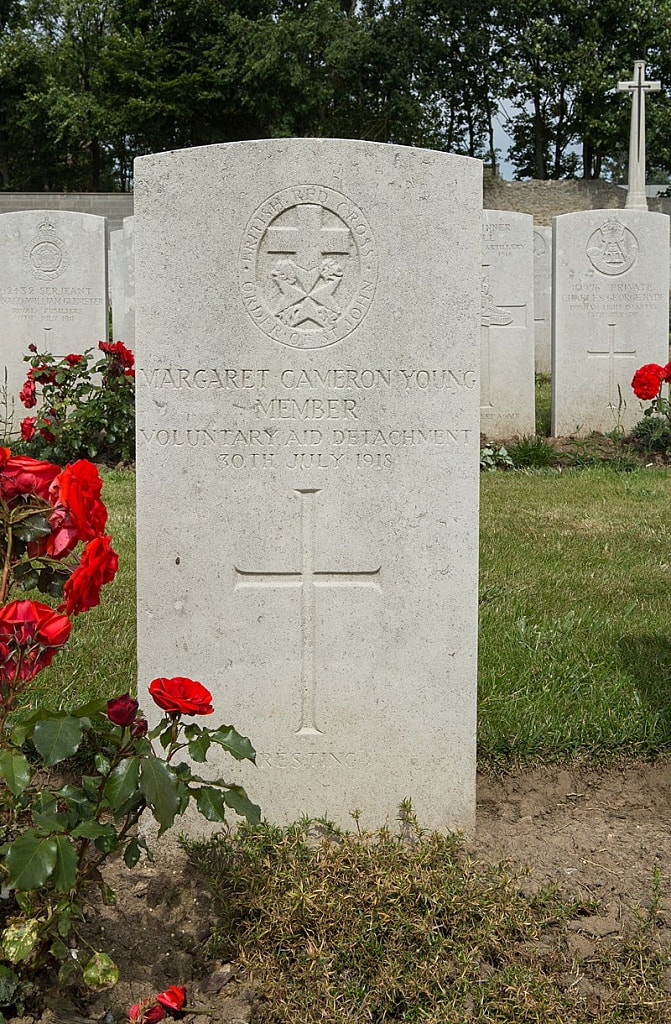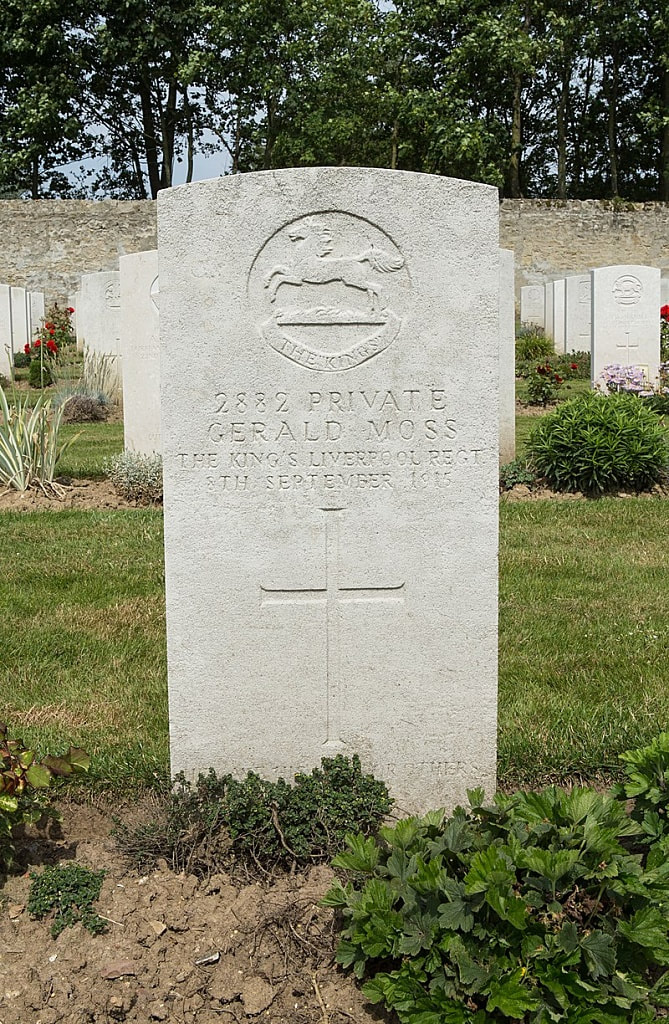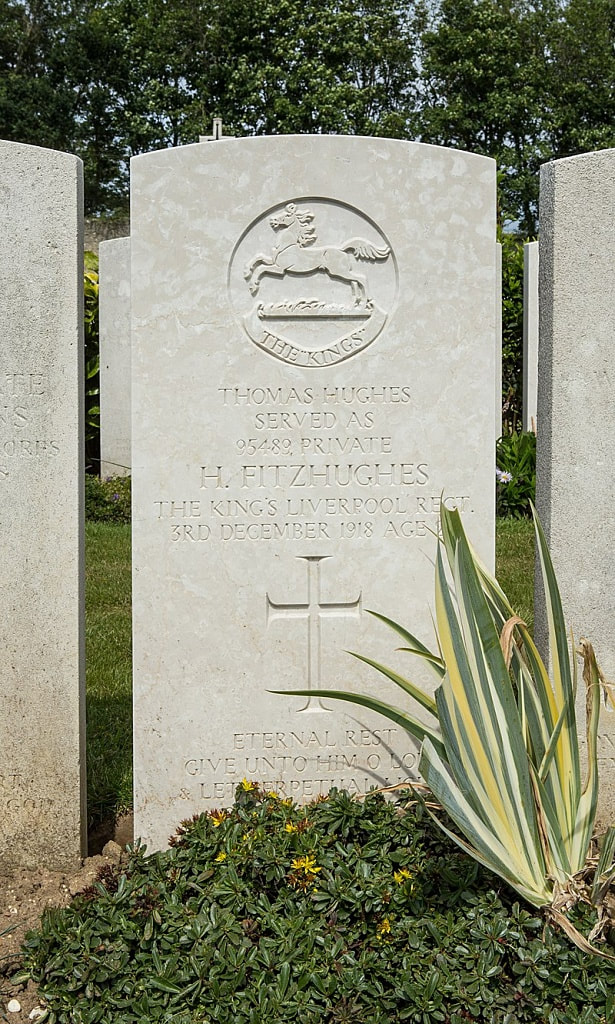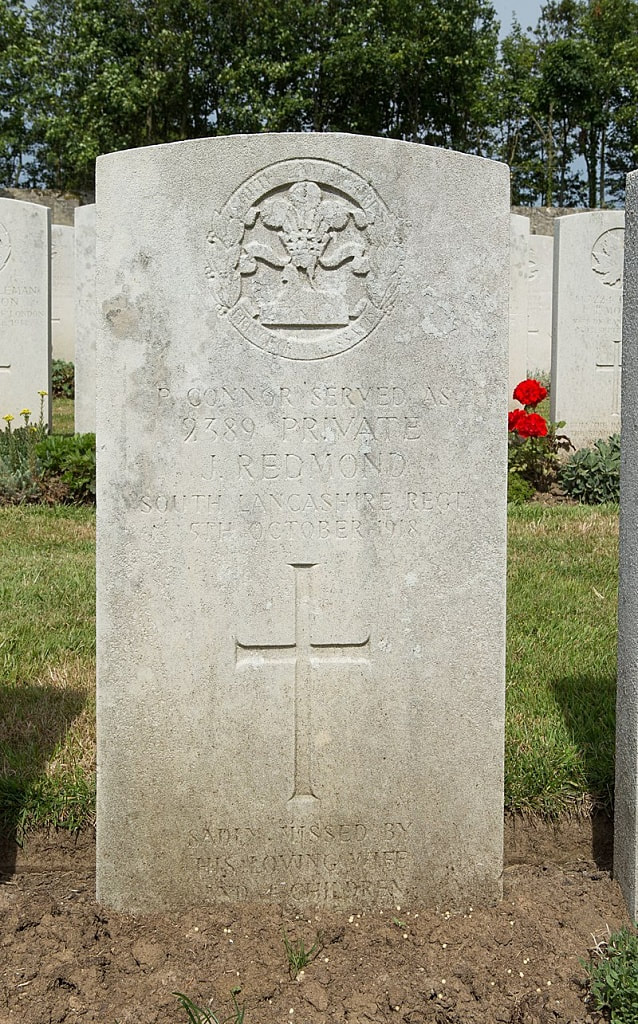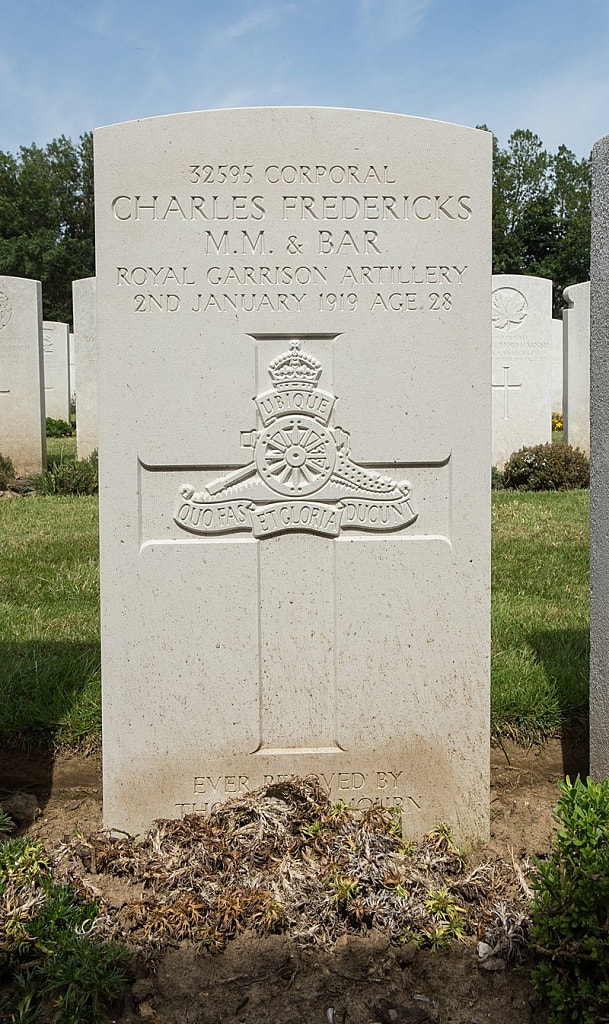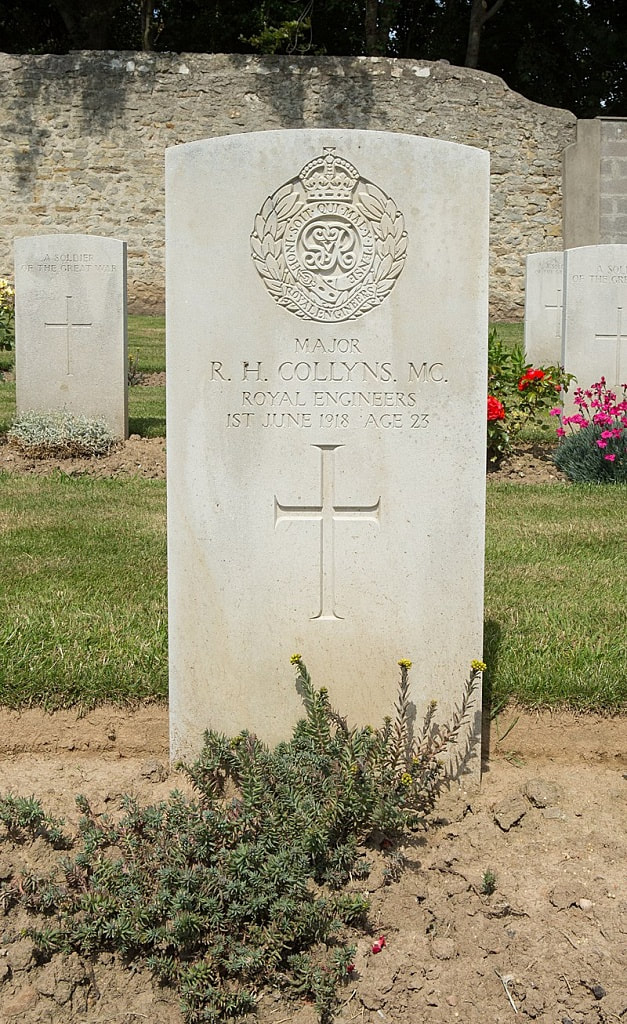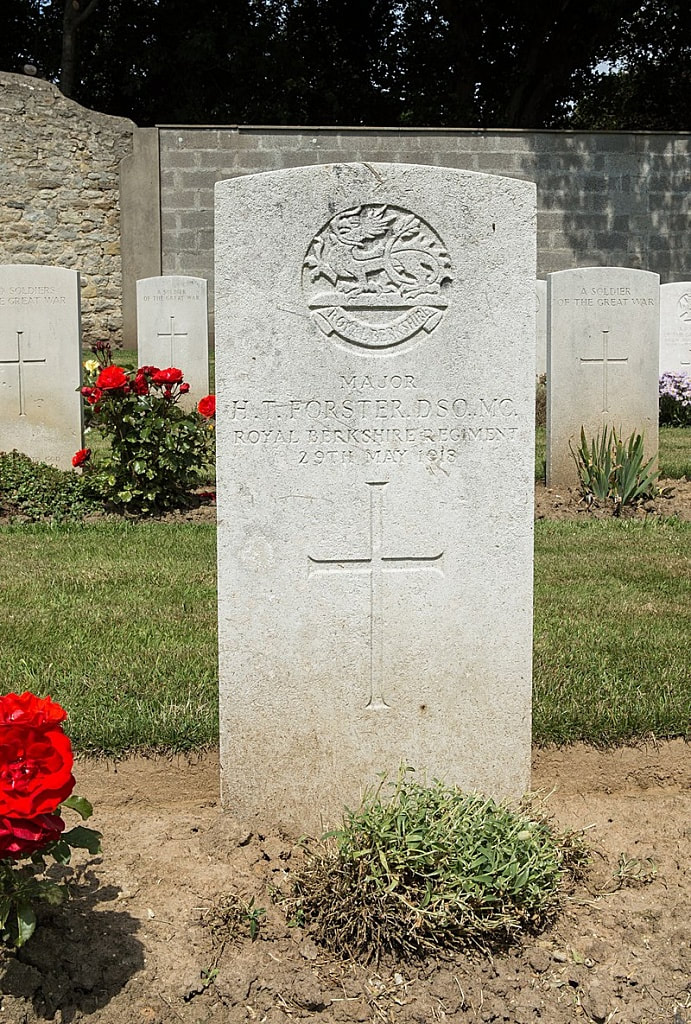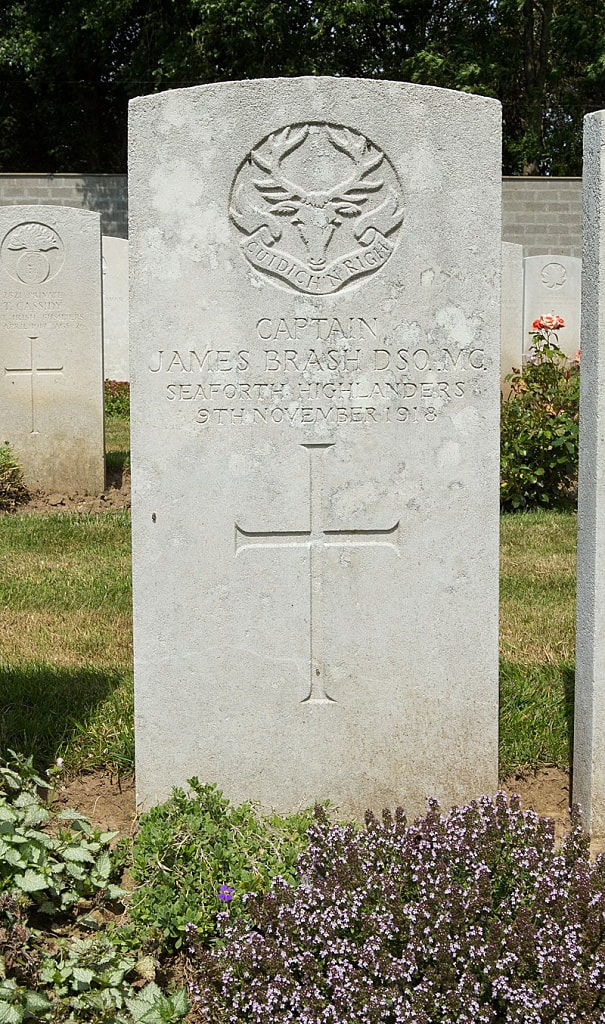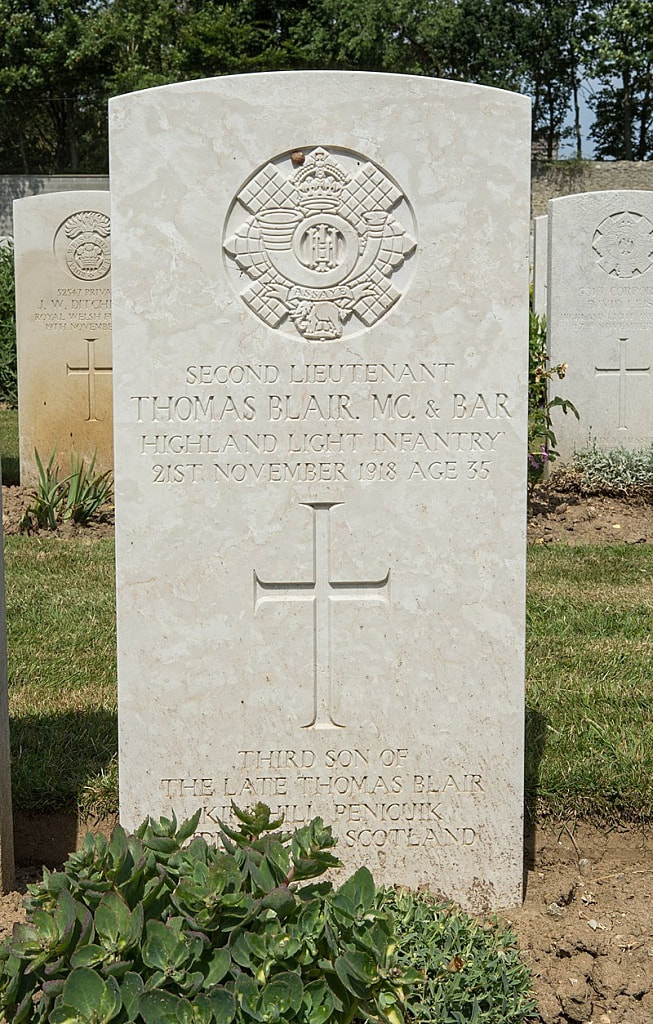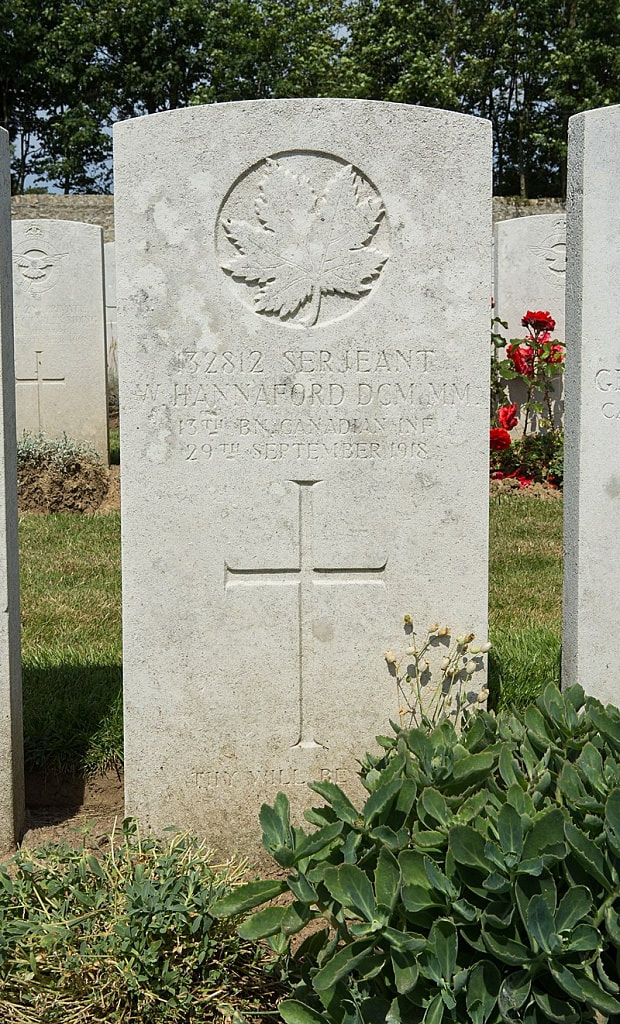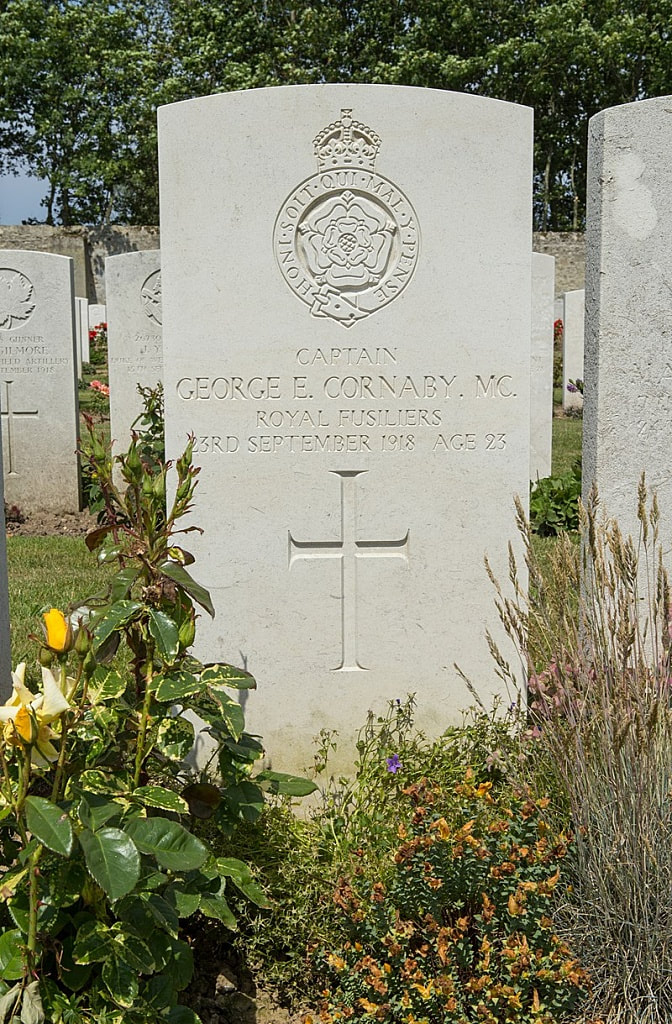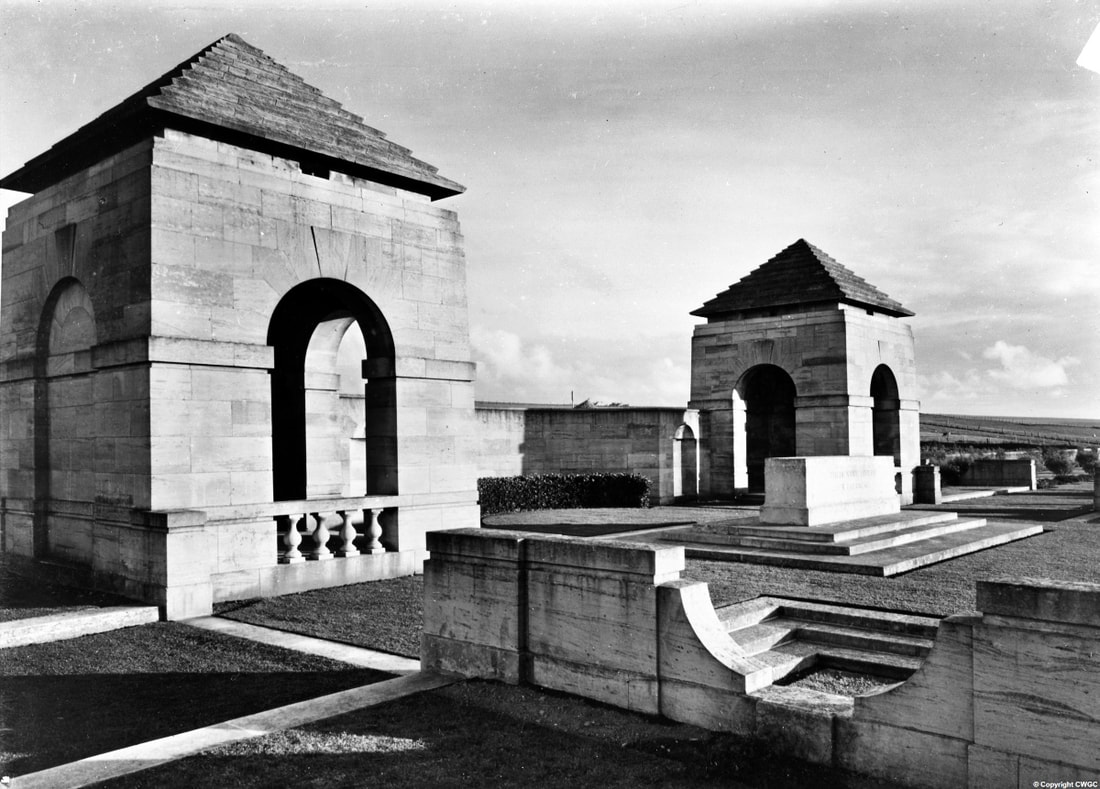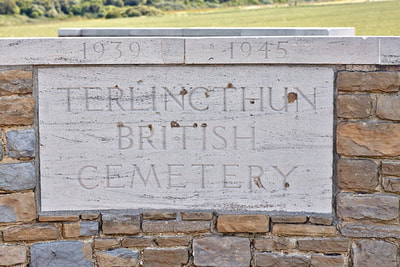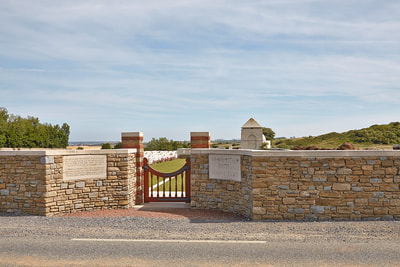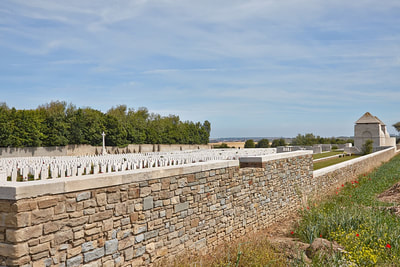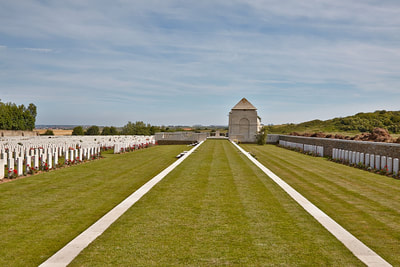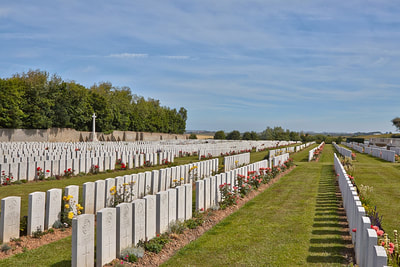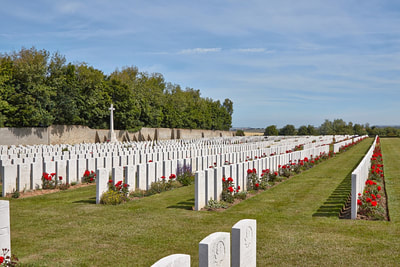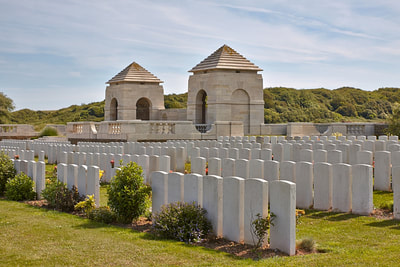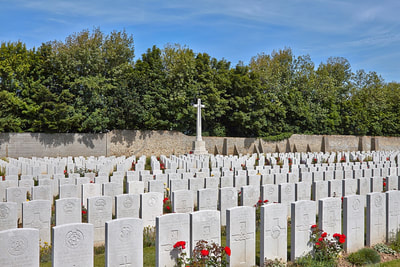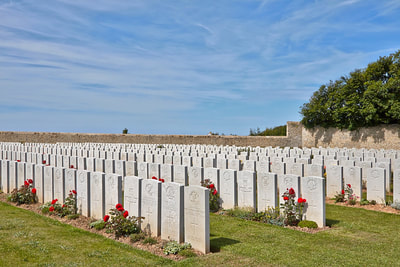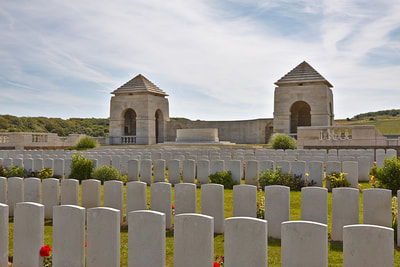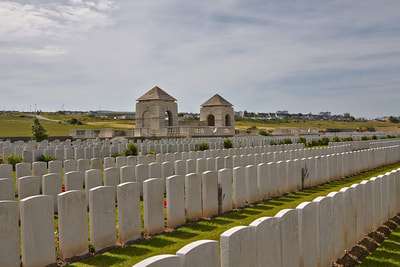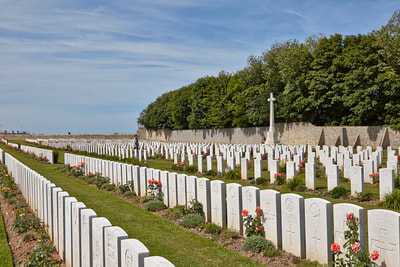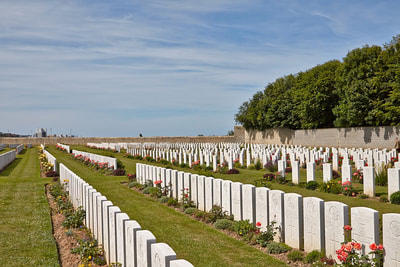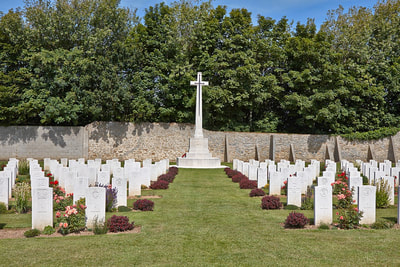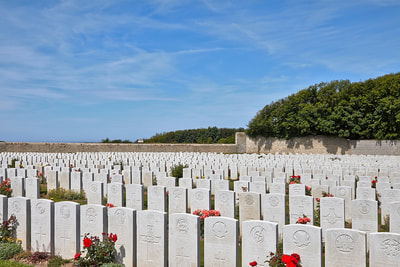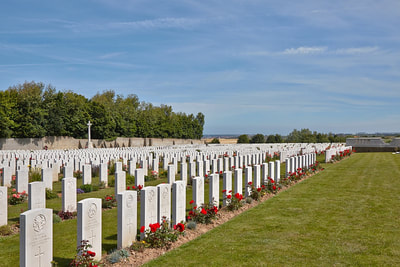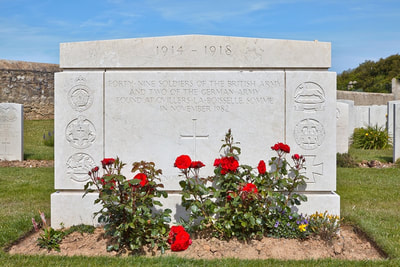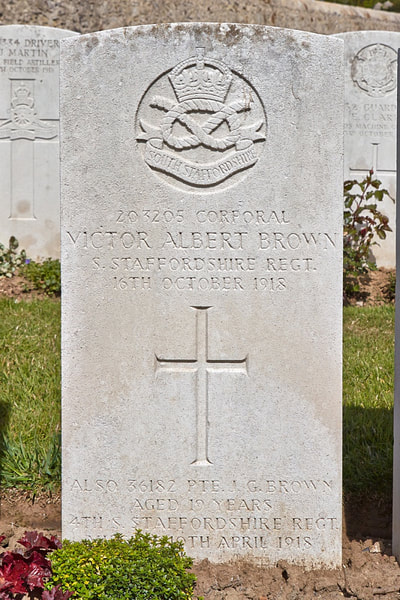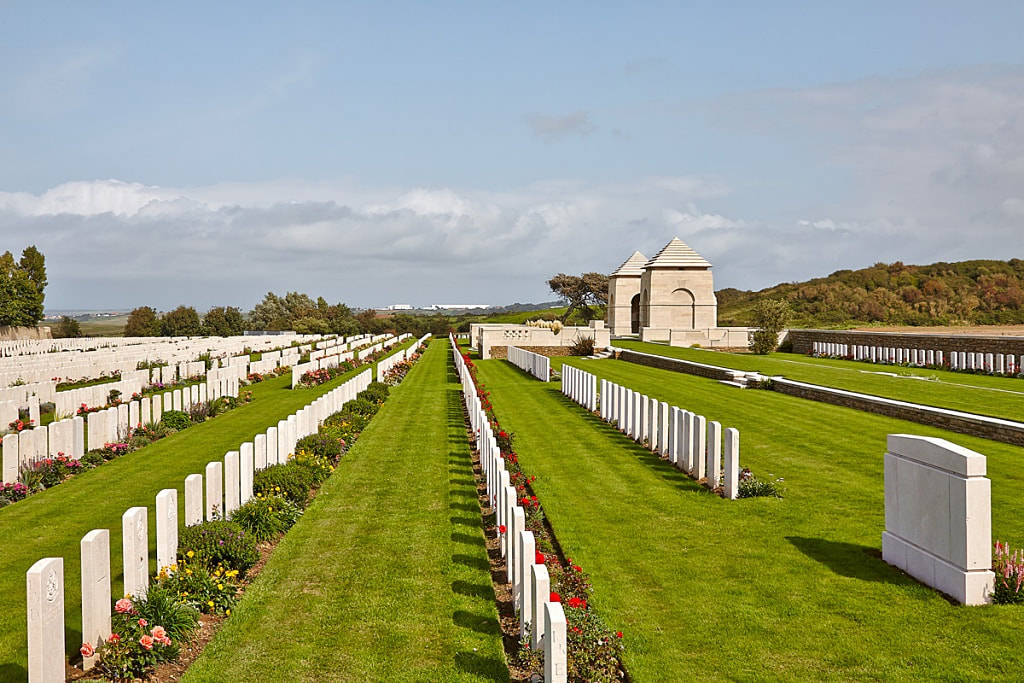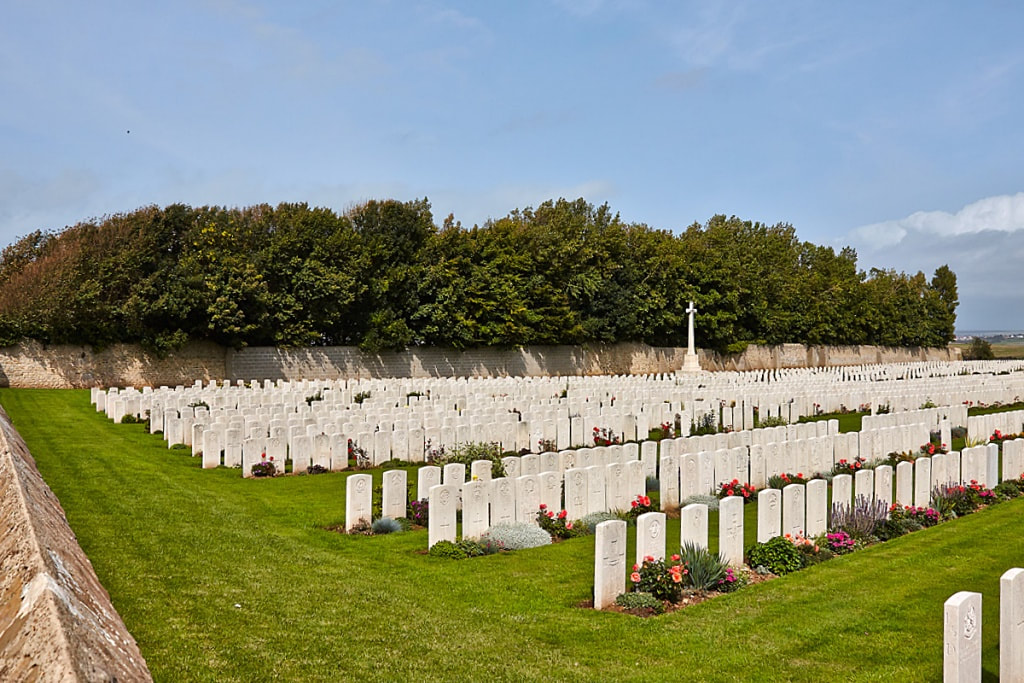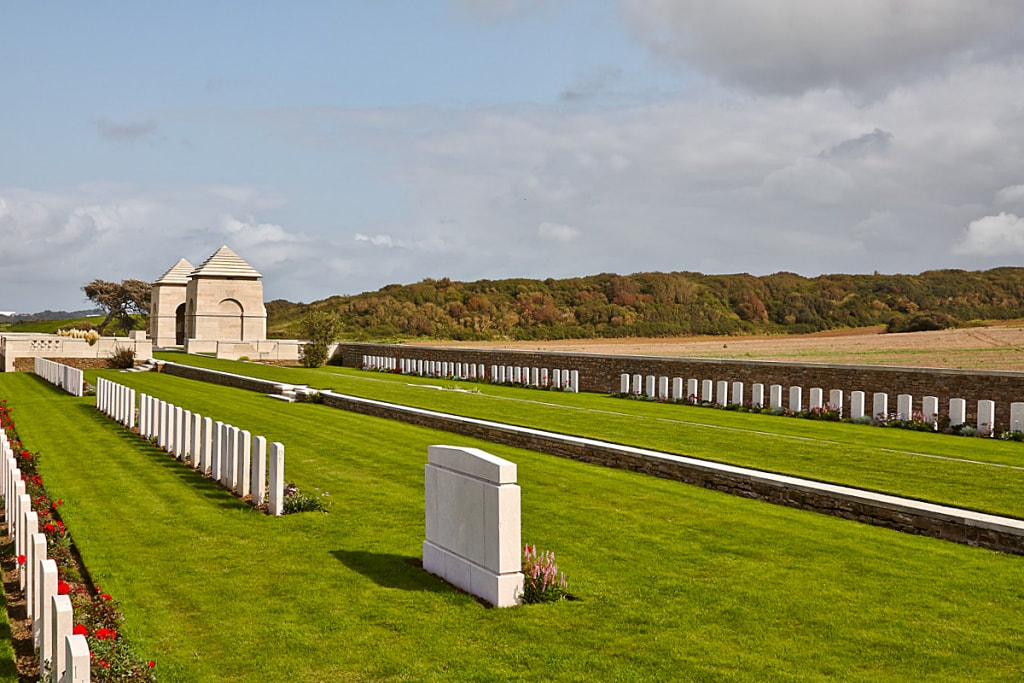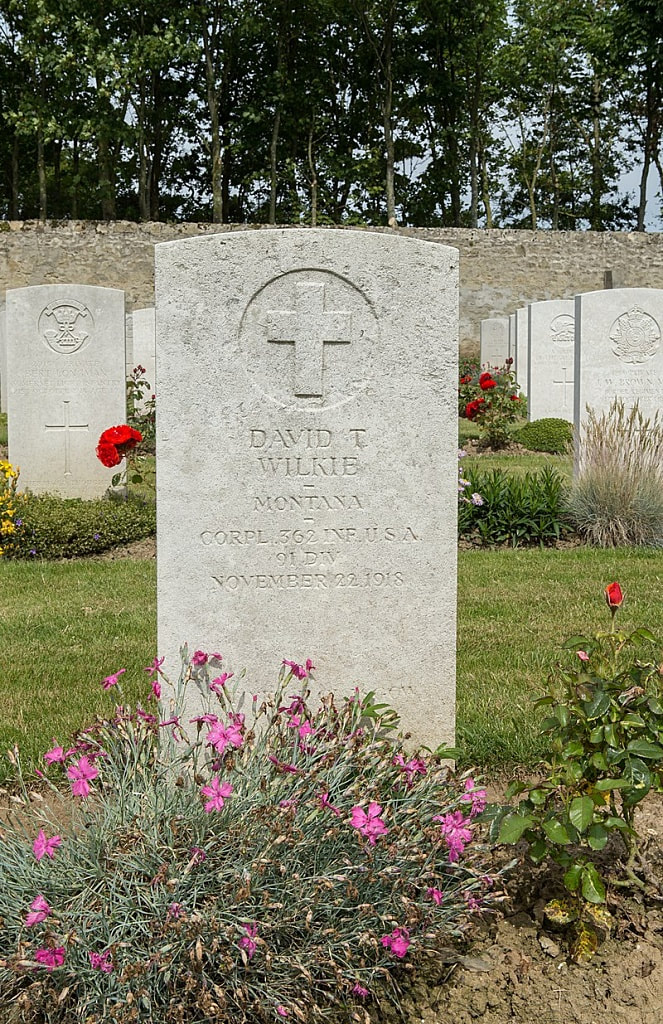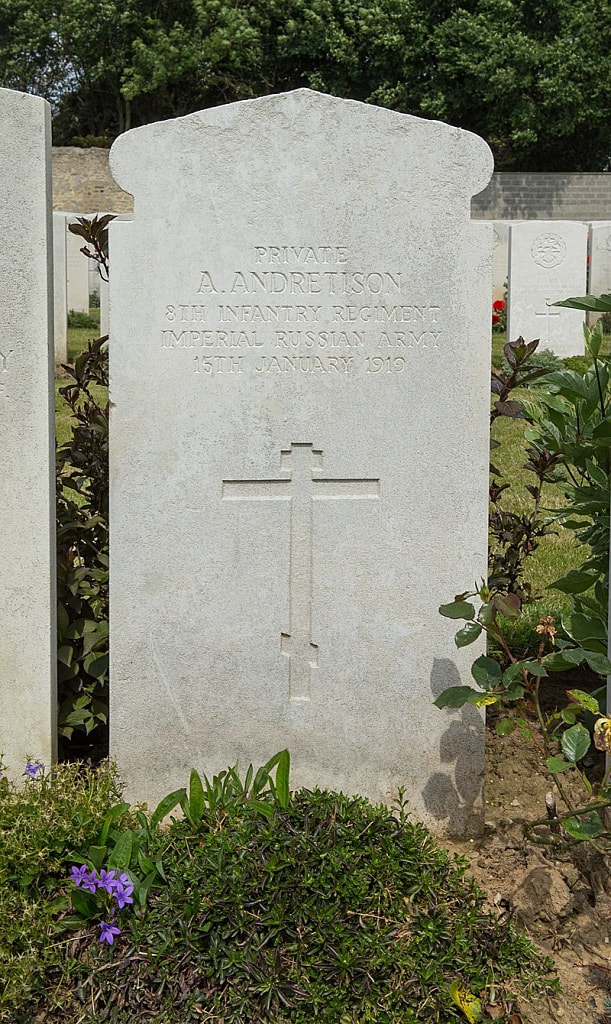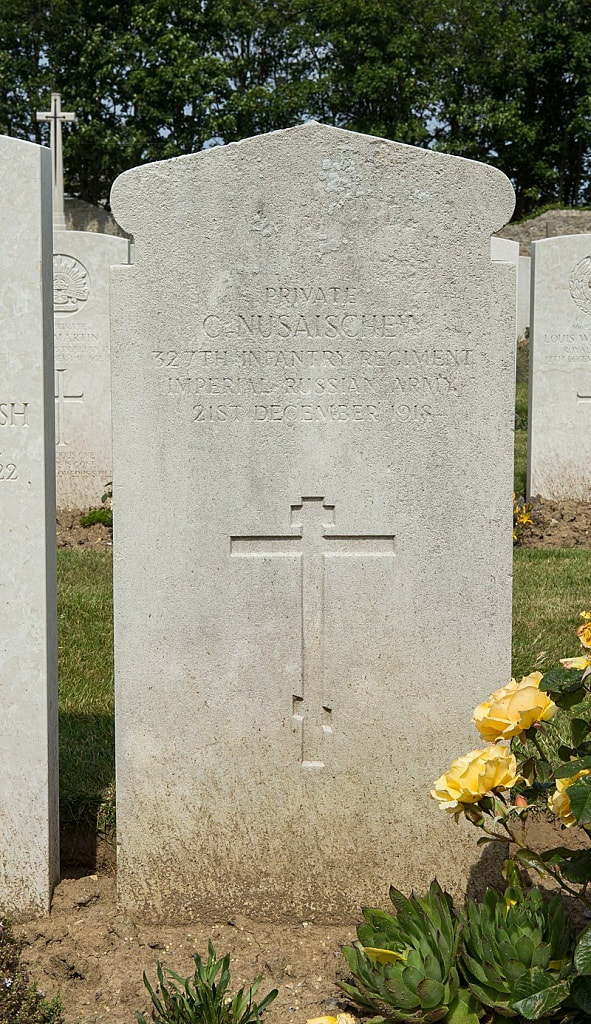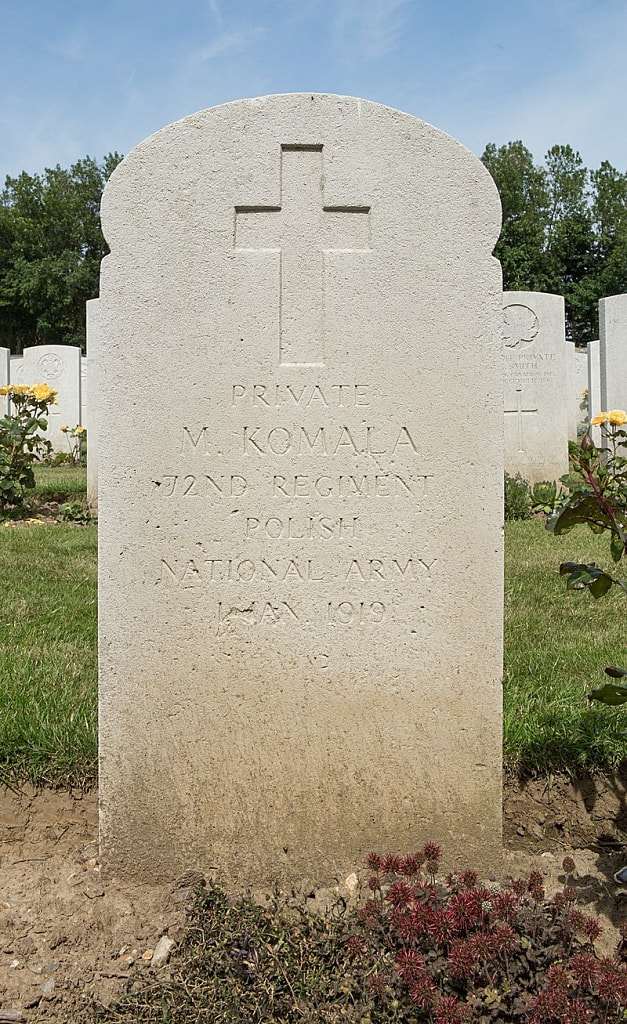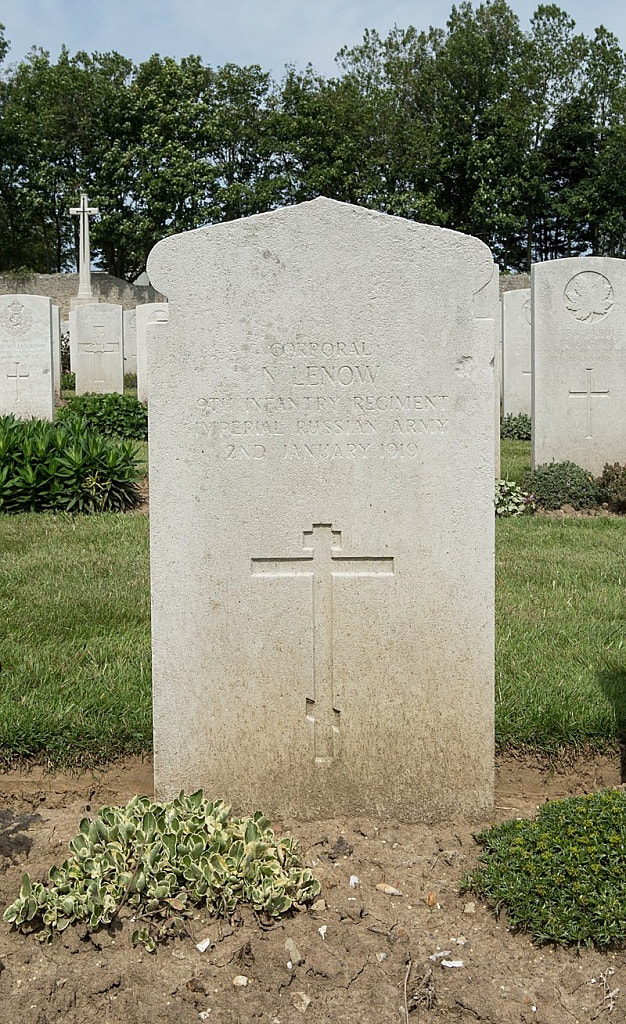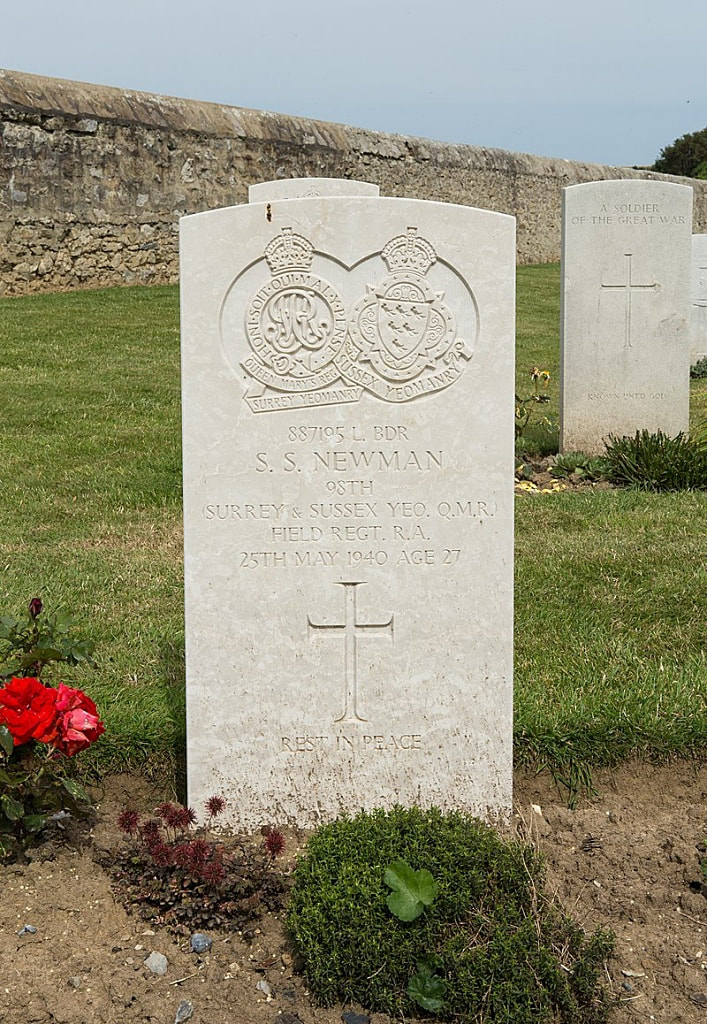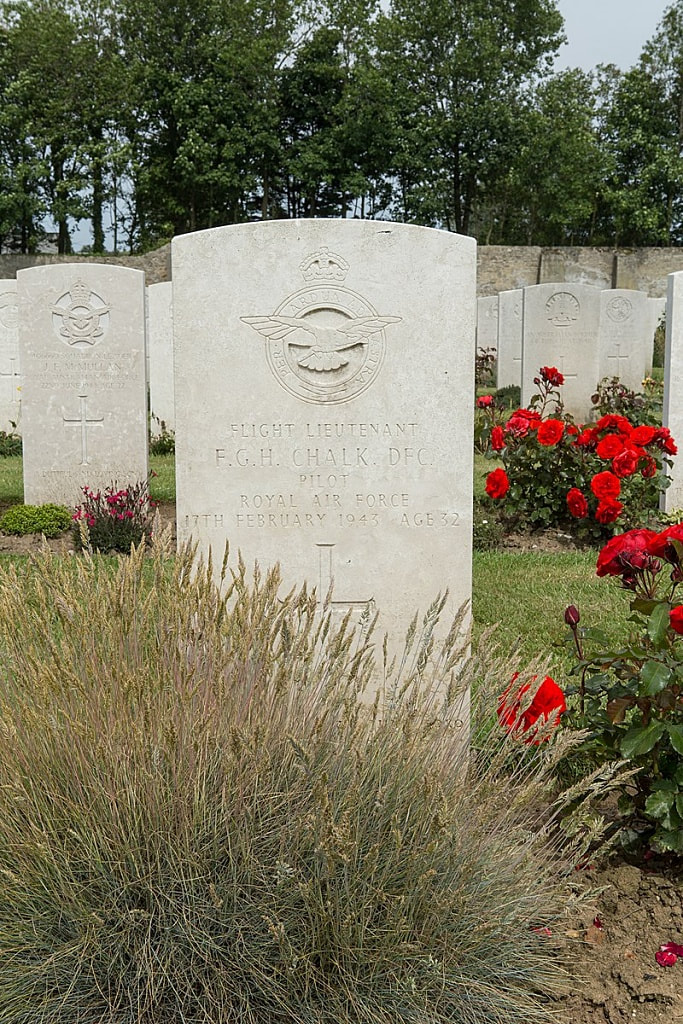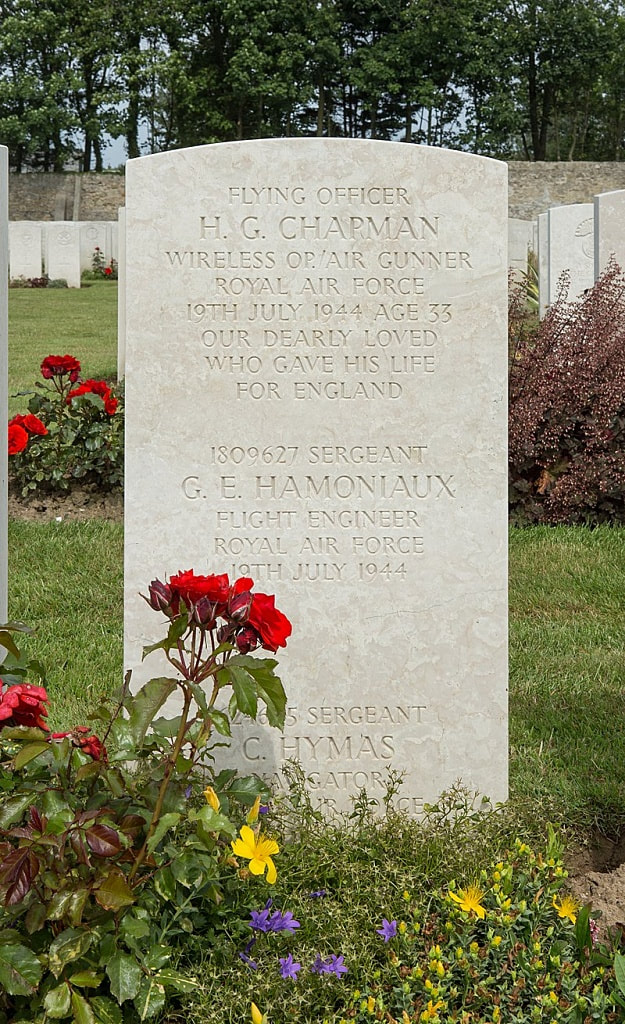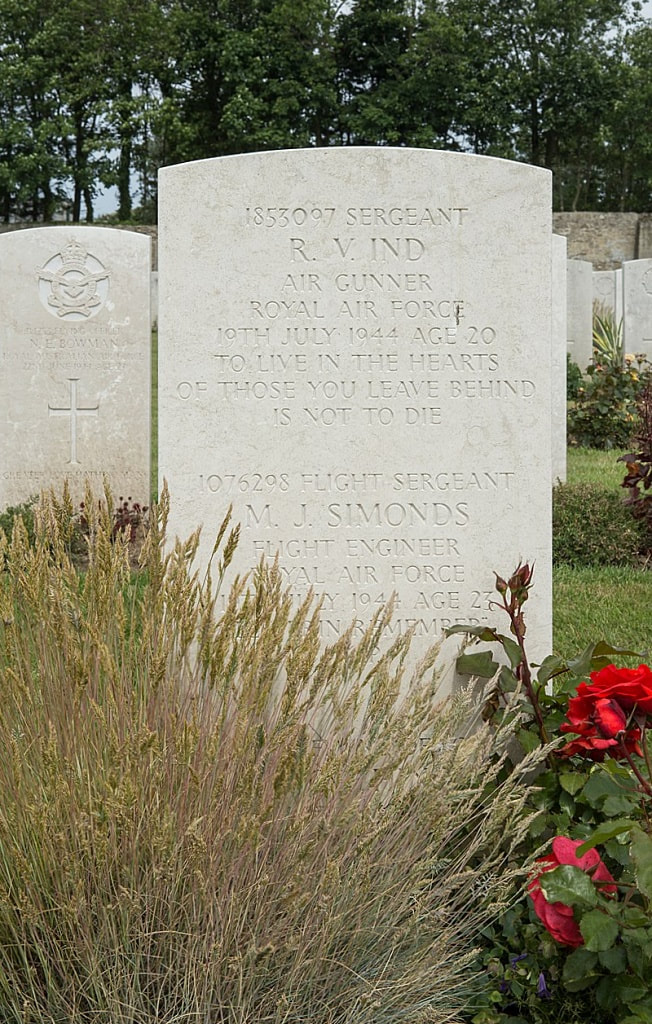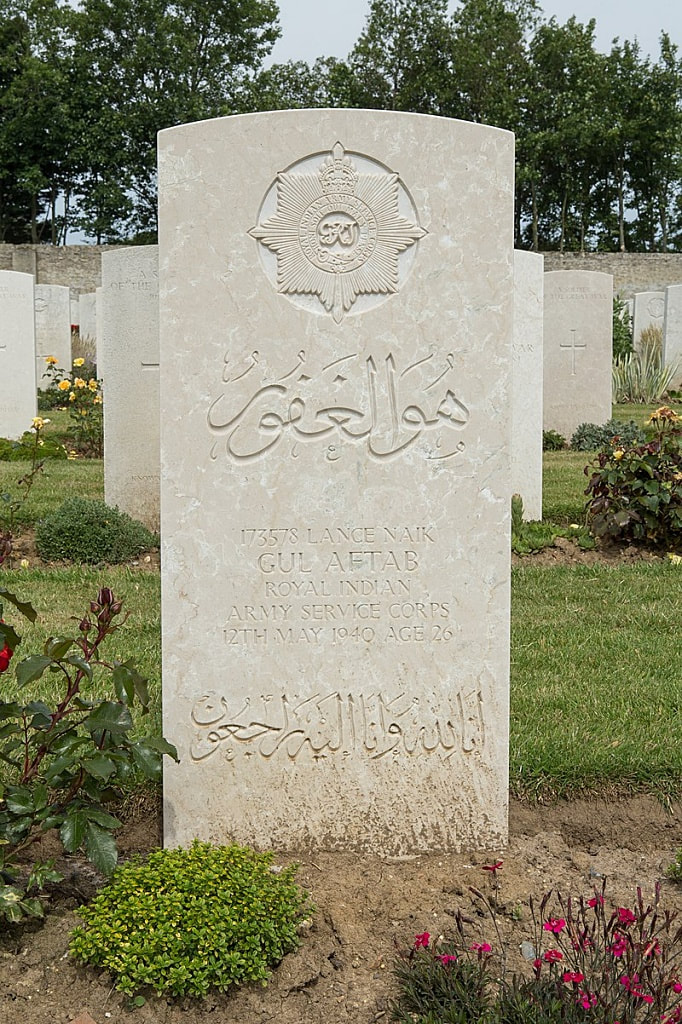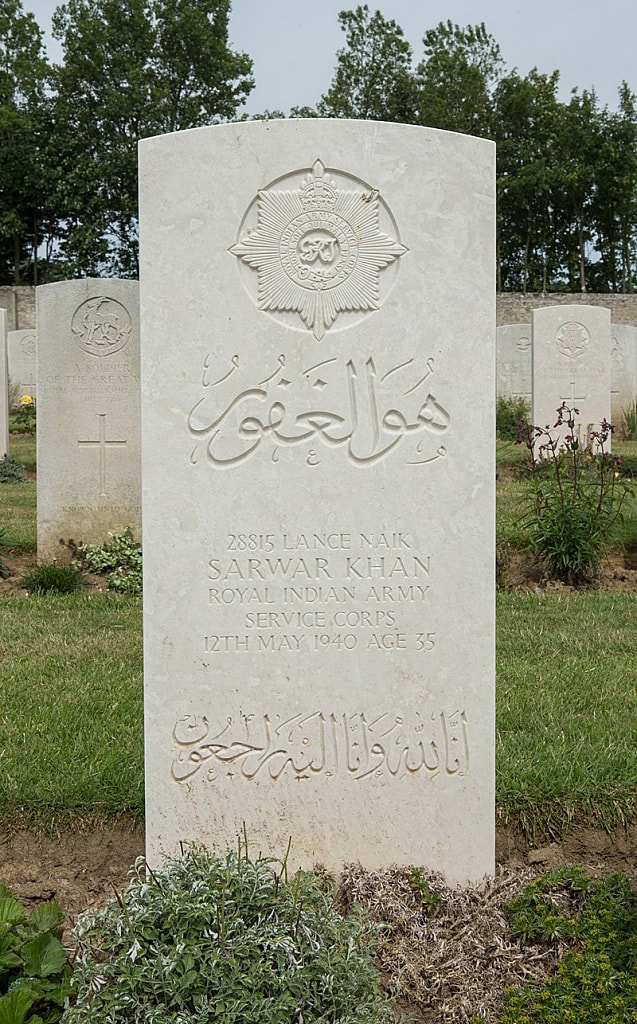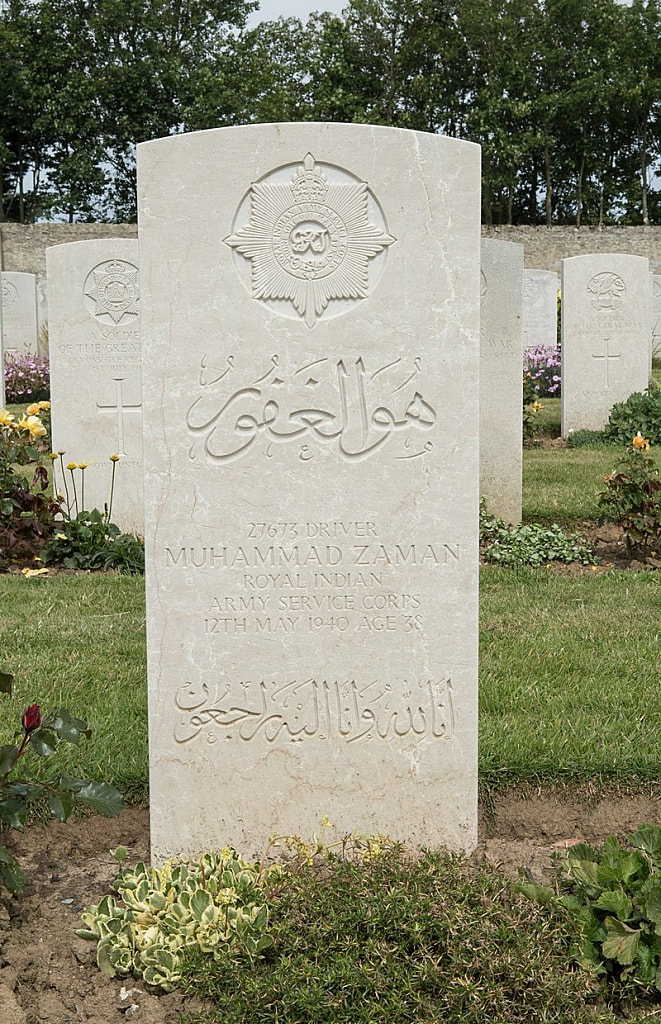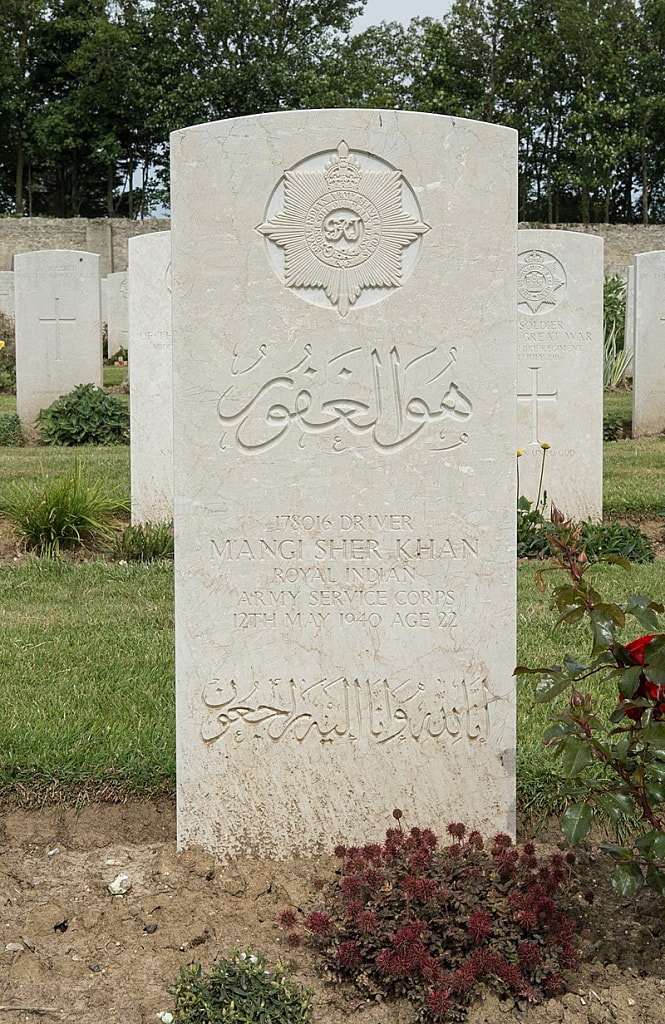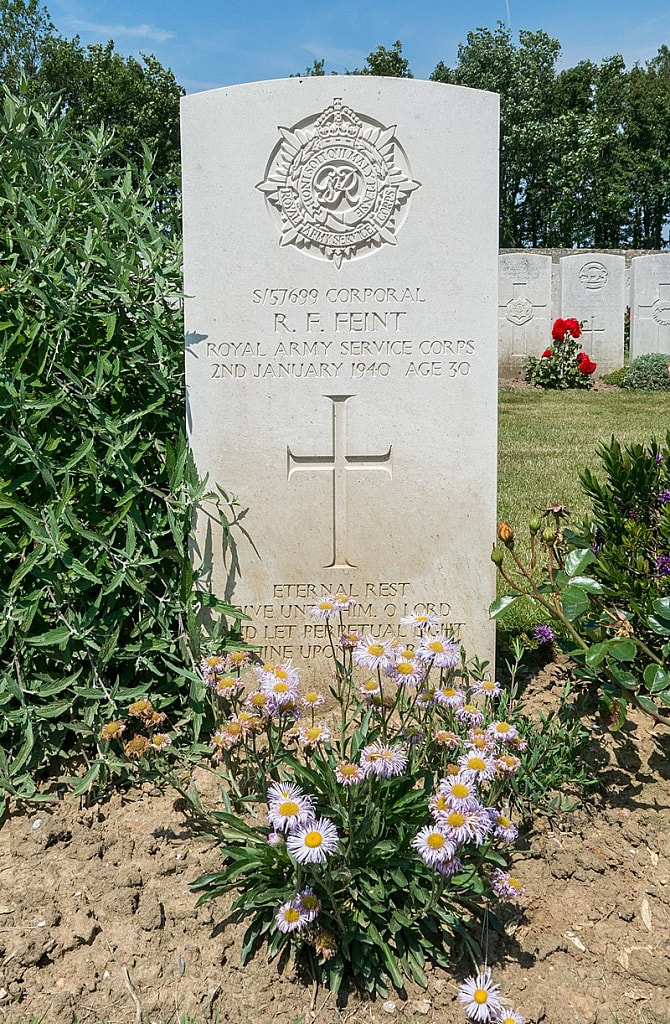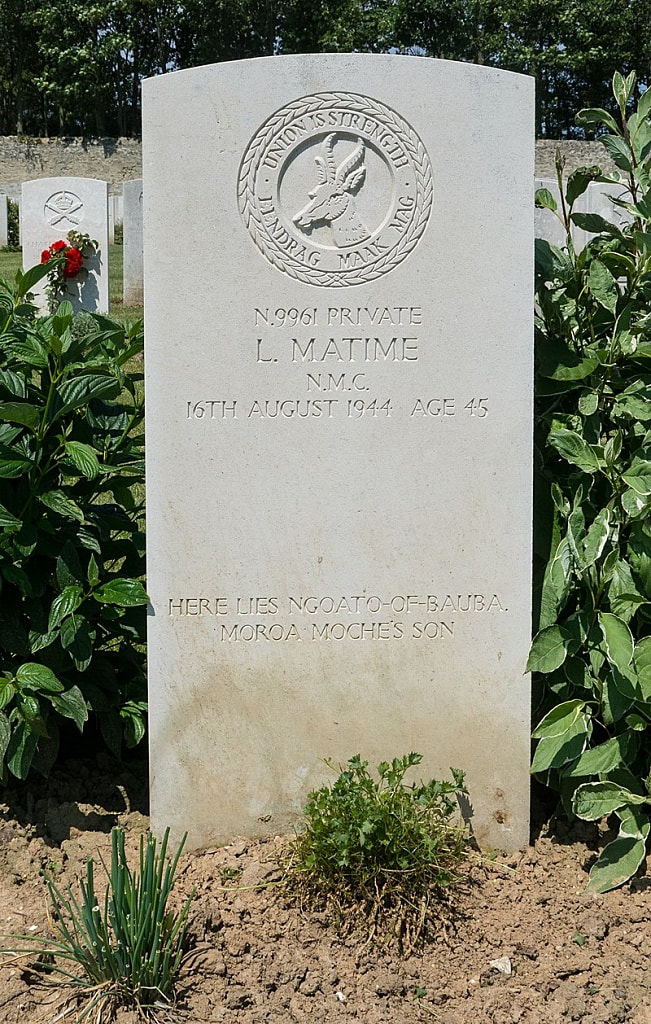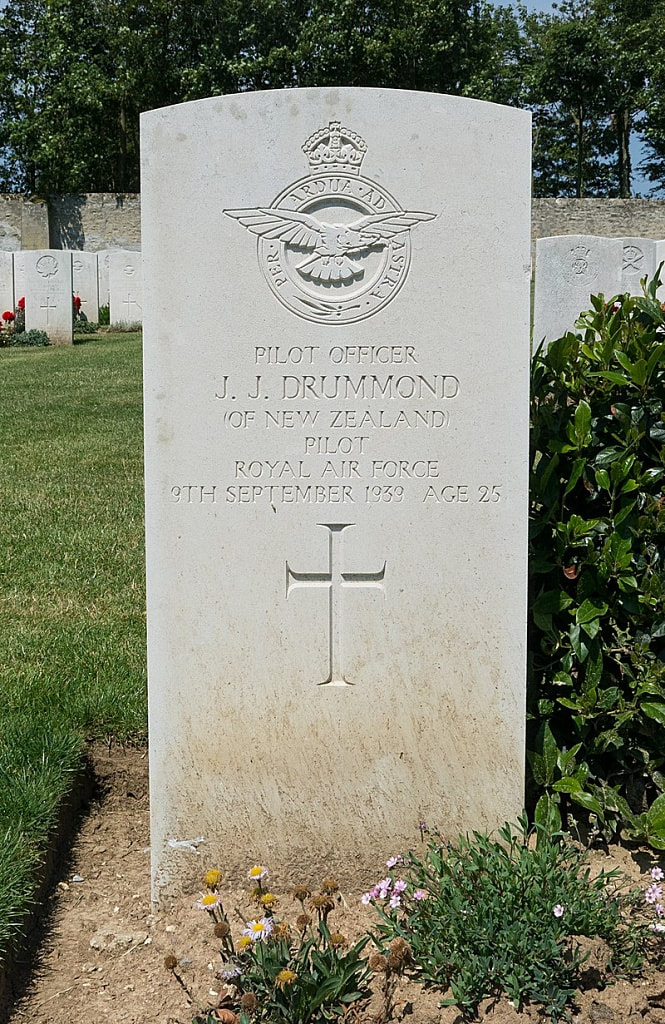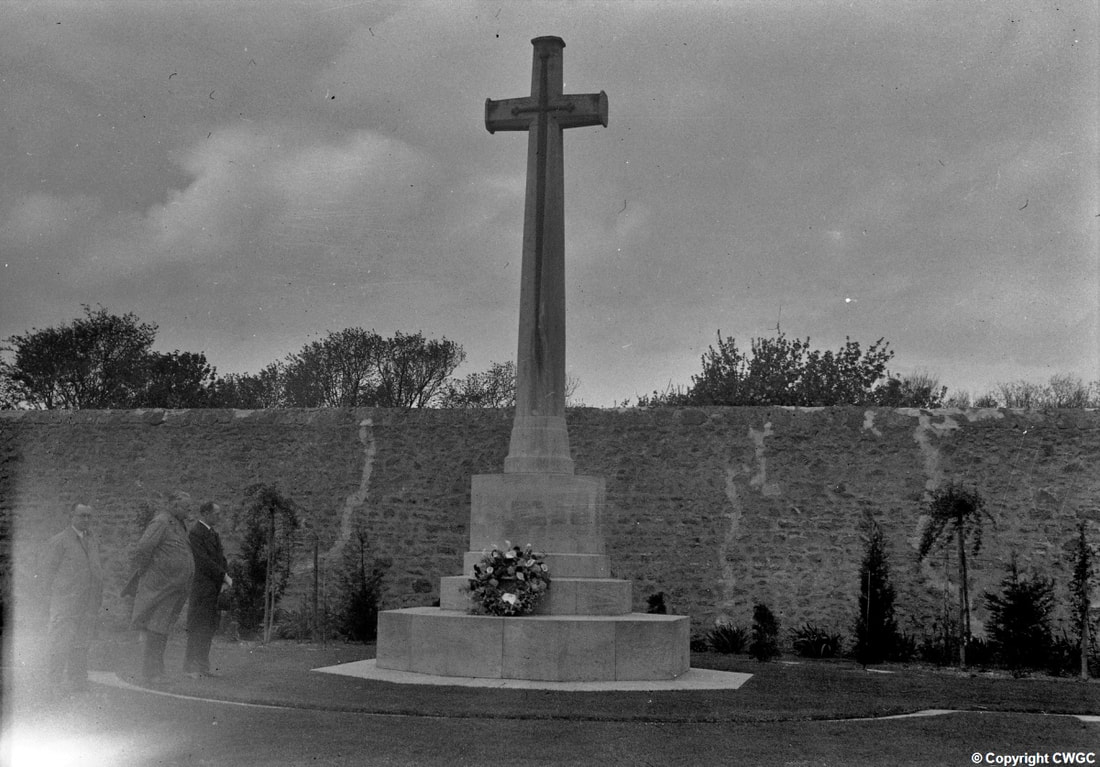TERLINCTHUN BRITISH CEMETERY
Wimille
Pas De Calais
France
GPS Coordinates: Latitude: 50.74393, Longitude: 1.61023
Location Information
Terlincthun British Cemetery is situated on the northern outskirts of Boulogne.
From Calais follow the A16 to Boulogne, come off at Junction 32 and follow the D96E for Wimereux Sud. Continue on this road for approximately 1 kilometre when the Cemetery will be found on the left hand side of the road. However, it should be noted that the entrance to the cemetery is in St Martin's Road, which is the road on the left immediately after the cemetery.
Visiting Information
Wheelchair access to this site possible, but may be by an alternative entrance.
Historical Information
The first rest camps for Commonwealth forces were established near Terlincthun in August 1914 and during the whole of the First World War, Boulogne and Wimereux housed numerous hospitals and other medical establishments.
The cemetery at Terlincthun was begun in June 1918 when the space available for service burials in the civil cemeteries of Boulogne and Wimereux was exhausted. It was used chiefly for burials from the base hospitals, but Plot IV Row C contains the graves of 46 RAF personnel killed at Marquise in September 1918 in a bombing raid by German aircraft.
In July 1920, the cemetery contained more than 3,300 burials, but for many years Terlincthun remained an 'open' cemetery and graves continued to be brought into it from isolated sites and other burials grounds throughout France where maintenance could not be assured.
During the Second World War, there was heavy fighting in the area in 1940. Wimille was devastated when, from 22 - 25 May, the garrison at Boulogne fought a spirited delaying action covering the withdrawal to Dunkirk. There was some fighting in Wimille again in 1944. The cemetery suffered considerable damage both from the shelling in 1940 and during the German occupation.
The cemetery now contains 4,379 Commonwealth burials of the First World War and more than 200 war graves of other nationalities, most of them German. Second World War burials number 149.
World War One Identified Casualties: United Kingdom 3,103, Canada 298, Germany 189, Australia 91, South Africa 42, New Zealand 31, Russia 4, U. S. A. 3, India 1, Poland 1. Total 3,673.
World War Two Identified Casualties: United Kingdom 98, Australia 14, India 4, South Africa 1. Total 117.
The cemetery was designed by Sir Herbert Baker and George Esslemont Gordon Leith
Dedications
18345 Private Sidney Hawkins, 7th Bn. Bedfordshire Regiment, 17th September 1915, aged 28. Lived at Waters Cottage, East Common, Harpenden, Herts.
Remembered by great, great nice, Lisa Thompson
13386 Corporal Patrick Murphy, 48th Brigade, 9th Bn. Royal Dublin Fusiliers, 9th September 1916 aged 42. Husband of Mary Murphy, of 13, Dargan St., Bray, Co. Wicklow.
Remembered by Great Grand Daughter, Donna Waldron
Terlincthun British Cemetery is situated on the northern outskirts of Boulogne.
From Calais follow the A16 to Boulogne, come off at Junction 32 and follow the D96E for Wimereux Sud. Continue on this road for approximately 1 kilometre when the Cemetery will be found on the left hand side of the road. However, it should be noted that the entrance to the cemetery is in St Martin's Road, which is the road on the left immediately after the cemetery.
Visiting Information
Wheelchair access to this site possible, but may be by an alternative entrance.
Historical Information
The first rest camps for Commonwealth forces were established near Terlincthun in August 1914 and during the whole of the First World War, Boulogne and Wimereux housed numerous hospitals and other medical establishments.
The cemetery at Terlincthun was begun in June 1918 when the space available for service burials in the civil cemeteries of Boulogne and Wimereux was exhausted. It was used chiefly for burials from the base hospitals, but Plot IV Row C contains the graves of 46 RAF personnel killed at Marquise in September 1918 in a bombing raid by German aircraft.
In July 1920, the cemetery contained more than 3,300 burials, but for many years Terlincthun remained an 'open' cemetery and graves continued to be brought into it from isolated sites and other burials grounds throughout France where maintenance could not be assured.
During the Second World War, there was heavy fighting in the area in 1940. Wimille was devastated when, from 22 - 25 May, the garrison at Boulogne fought a spirited delaying action covering the withdrawal to Dunkirk. There was some fighting in Wimille again in 1944. The cemetery suffered considerable damage both from the shelling in 1940 and during the German occupation.
The cemetery now contains 4,379 Commonwealth burials of the First World War and more than 200 war graves of other nationalities, most of them German. Second World War burials number 149.
World War One Identified Casualties: United Kingdom 3,103, Canada 298, Germany 189, Australia 91, South Africa 42, New Zealand 31, Russia 4, U. S. A. 3, India 1, Poland 1. Total 3,673.
World War Two Identified Casualties: United Kingdom 98, Australia 14, India 4, South Africa 1. Total 117.
The cemetery was designed by Sir Herbert Baker and George Esslemont Gordon Leith
Dedications
18345 Private Sidney Hawkins, 7th Bn. Bedfordshire Regiment, 17th September 1915, aged 28. Lived at Waters Cottage, East Common, Harpenden, Herts.
Remembered by great, great nice, Lisa Thompson
13386 Corporal Patrick Murphy, 48th Brigade, 9th Bn. Royal Dublin Fusiliers, 9th September 1916 aged 42. Husband of Mary Murphy, of 13, Dargan St., Bray, Co. Wicklow.
Remembered by Great Grand Daughter, Donna Waldron
Shot at Dawn
Second Lieutenant John H. Paterson, 3rd Bn. Essex Regiment, attached 1st Bn. Executed for murder, 24th September 1918. Plot IV. B. 48.
Second Lieutenant John H. Paterson, 3rd Bn. Essex Regiment, attached 1st Bn. Executed for murder, 24th September 1918. Plot IV. B. 48.
He had been a trader in West Africa, who returned to England in Feb 1914. On 6 Apr 1915, Paterson enlisted & arrived in France on 17 Nov 1915. He was twice wounded on the Somme; & sent for officer training to England, where he was commissioned as Second Lieutenant in June 1917.
Thereafter he served in France & latterly in Belgium at Zillebeke.
There, in the evening of 26 Mar 1918, Paterson was in charge of a working party, when he ordered the sergeant to wait with the men while he went off to look for his pocket-book, alleged to have been lost. Search was made for him that night in vain: he was not seen again till the evening of 3 July 1918.
Lance Corporal Stockton & Detective Sergeant Collison of the Military Foot Police saw Paterson on foot, accompanied by a French woman, at Pont Cologne near Calais. When accosted by them, he gave a false name, but soon after as the 4 walked along together, he admitted his true identity & asked to be allowed to take tea ‘with this young lady in that house over there’.
The police agreed, but kept watch. After almost 2 hours, Paterson emerged & spoke to Collison, who called Stockton over. There were then 2 shots from Paterson’s revolver. The first — heard as indistinct by a witness — seems to have been accidental, causing a wound to the thigh of Paterson as he went for the gun in his pocket while the second shot, directed at Collinson, killed him. Paterson’s French companion said that during the evening with him in her father’s house, Paterson had said: ‘If they do not leave, I will fire at them’; & that, after the shooting, Paterson had taken her away into hiding at an hotel in Calais. On 22 July Paterson was found & arrested at St Omer.
On 11 Sept 1918, he faced 7 charges: murder, desertion & 5 charges of forgery of cheques, to be tried at court martial by a panel of 5 officers, with a Brigadier-General presiding. Paterson was represented by a barrister Lieutenant.
The murder charge was tried first, & Paterson gave evidence. He explained that he wounded himself when putting his hand in his pocket for the gun; once pulled out, it went off accidentally, killing Collison. Paterson agreed that he had not intended to give himself up, but claimed that he had only sought to frighten off the policemen with his revolver.
After he was convicted of murder, he pleaded Guilty to desertion & to the forgeries. Sentence of death was confirmed by Haig on 20 Sept. Paterson was the only officer executed during the war for murder in the field. (Corns, pp.372-8, with photograph)
His victim is buried at Les Baraques Military Cemetery. Calais

